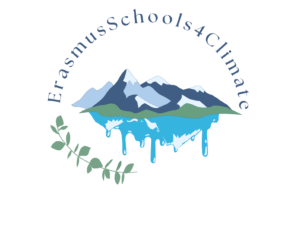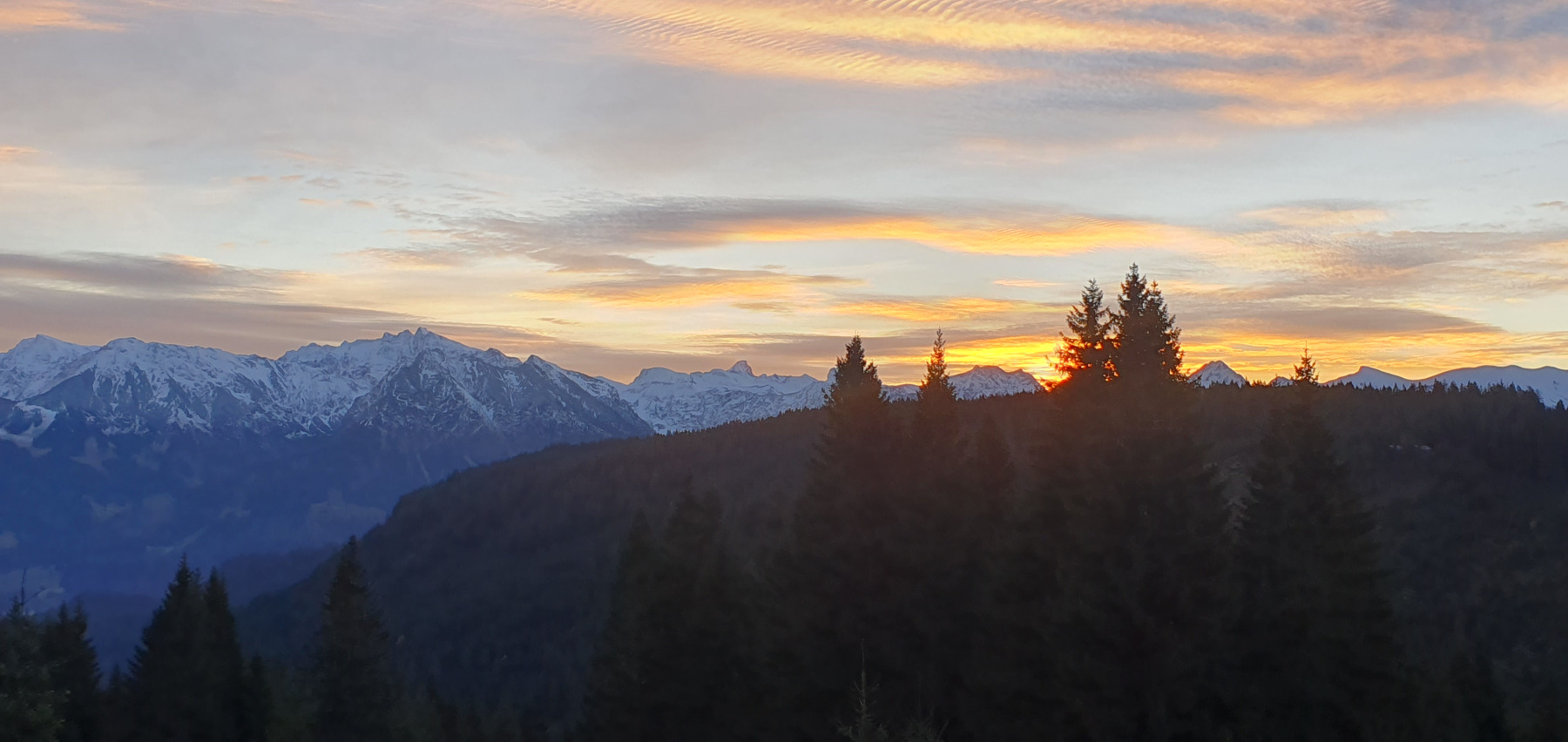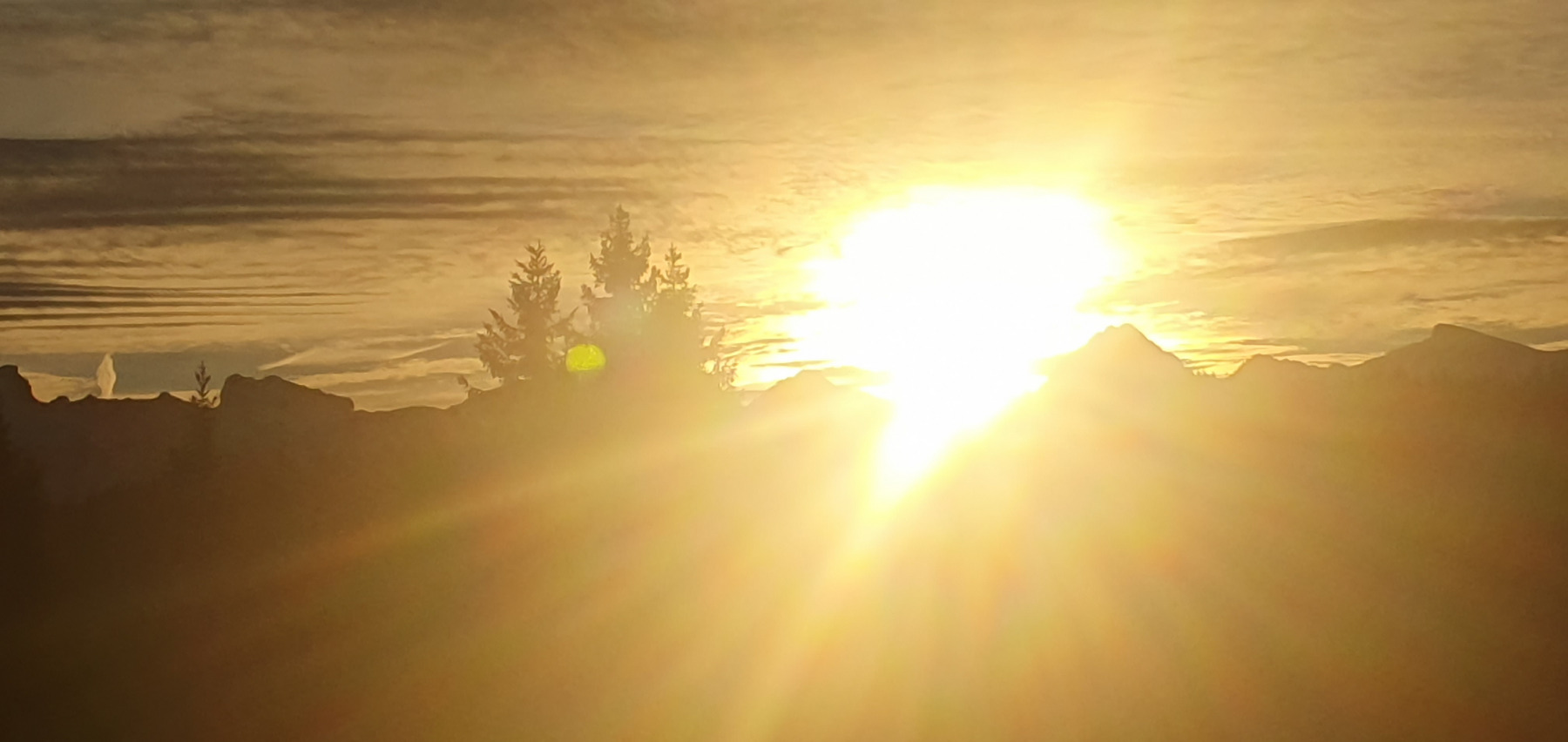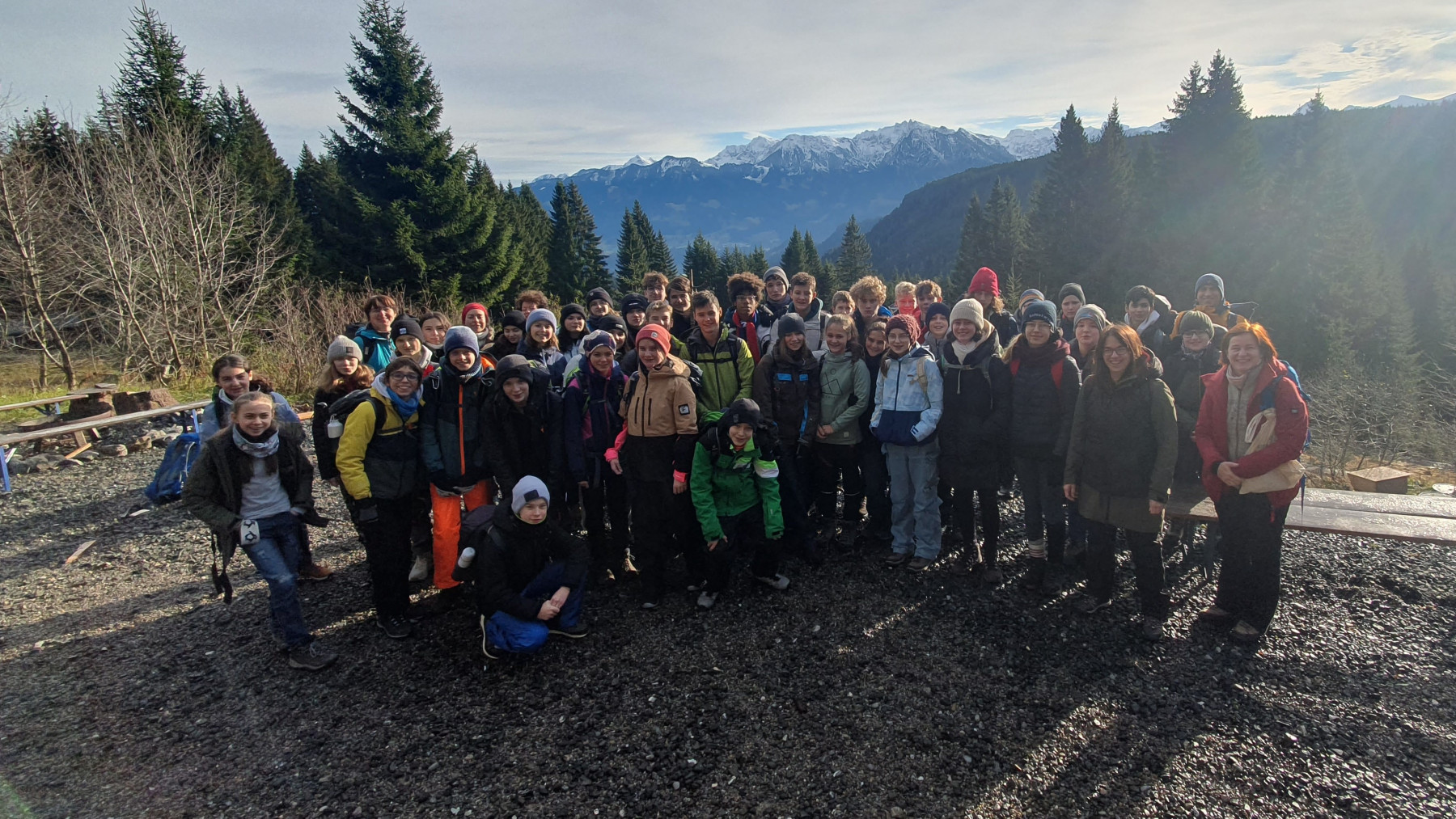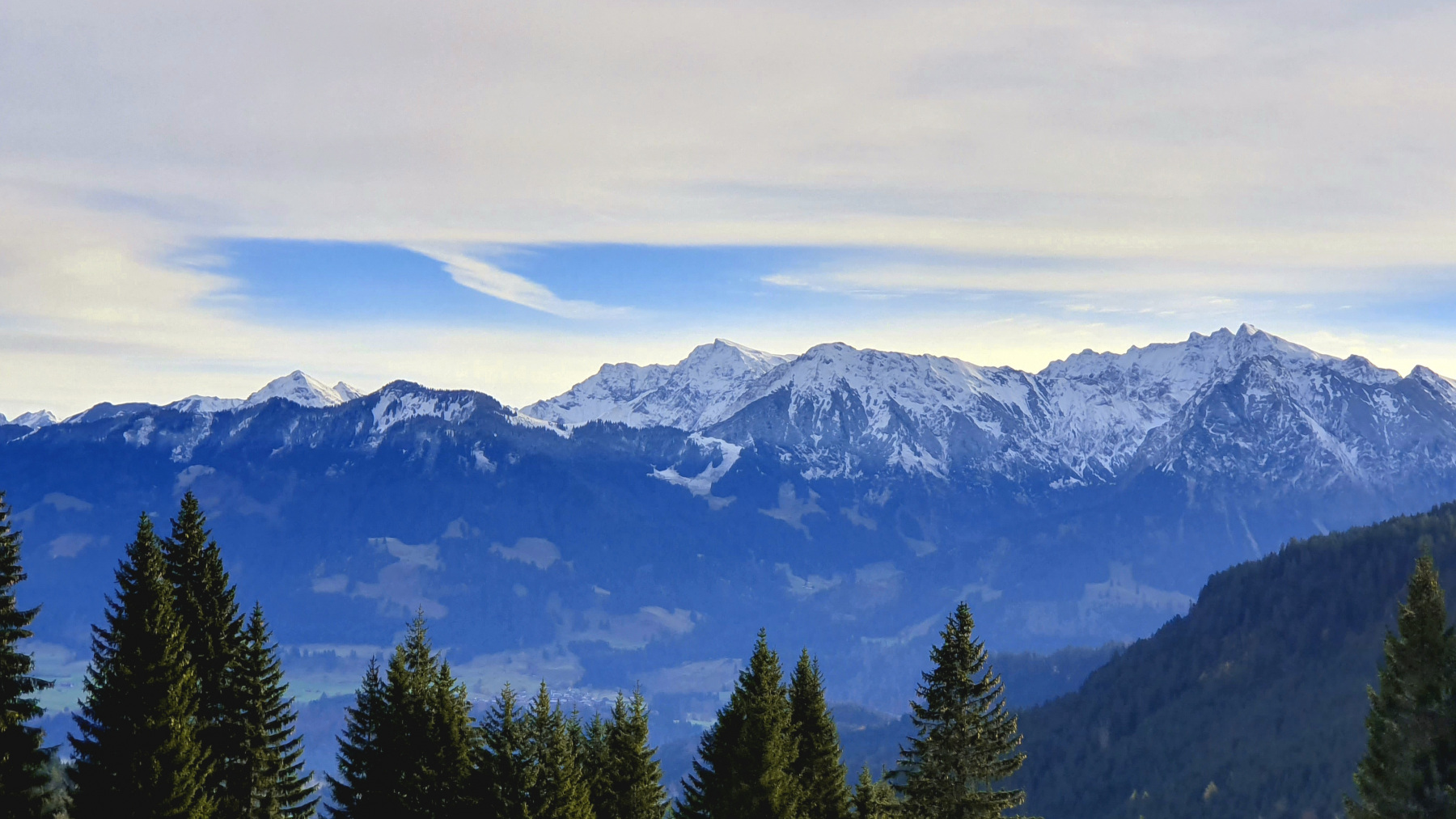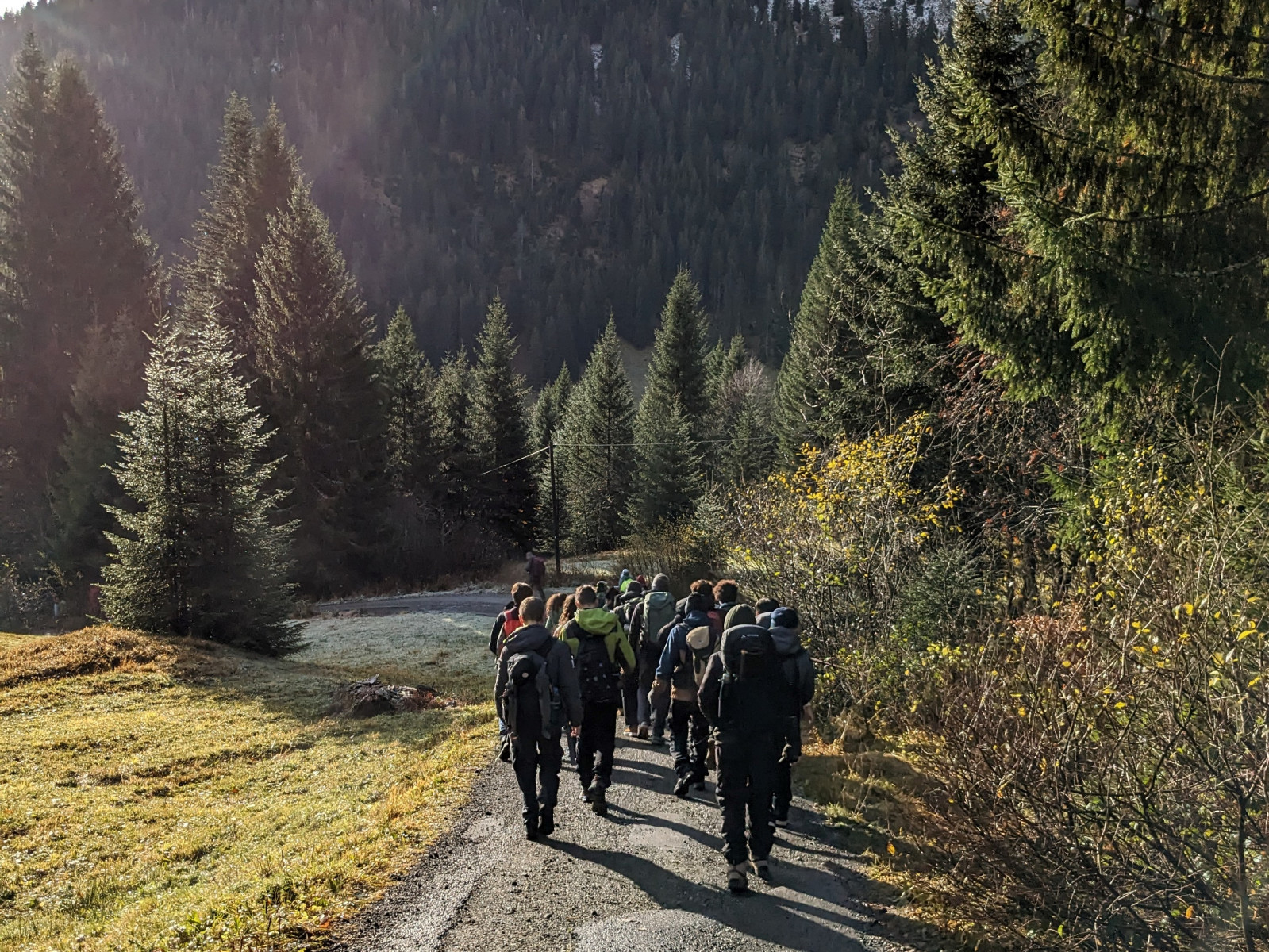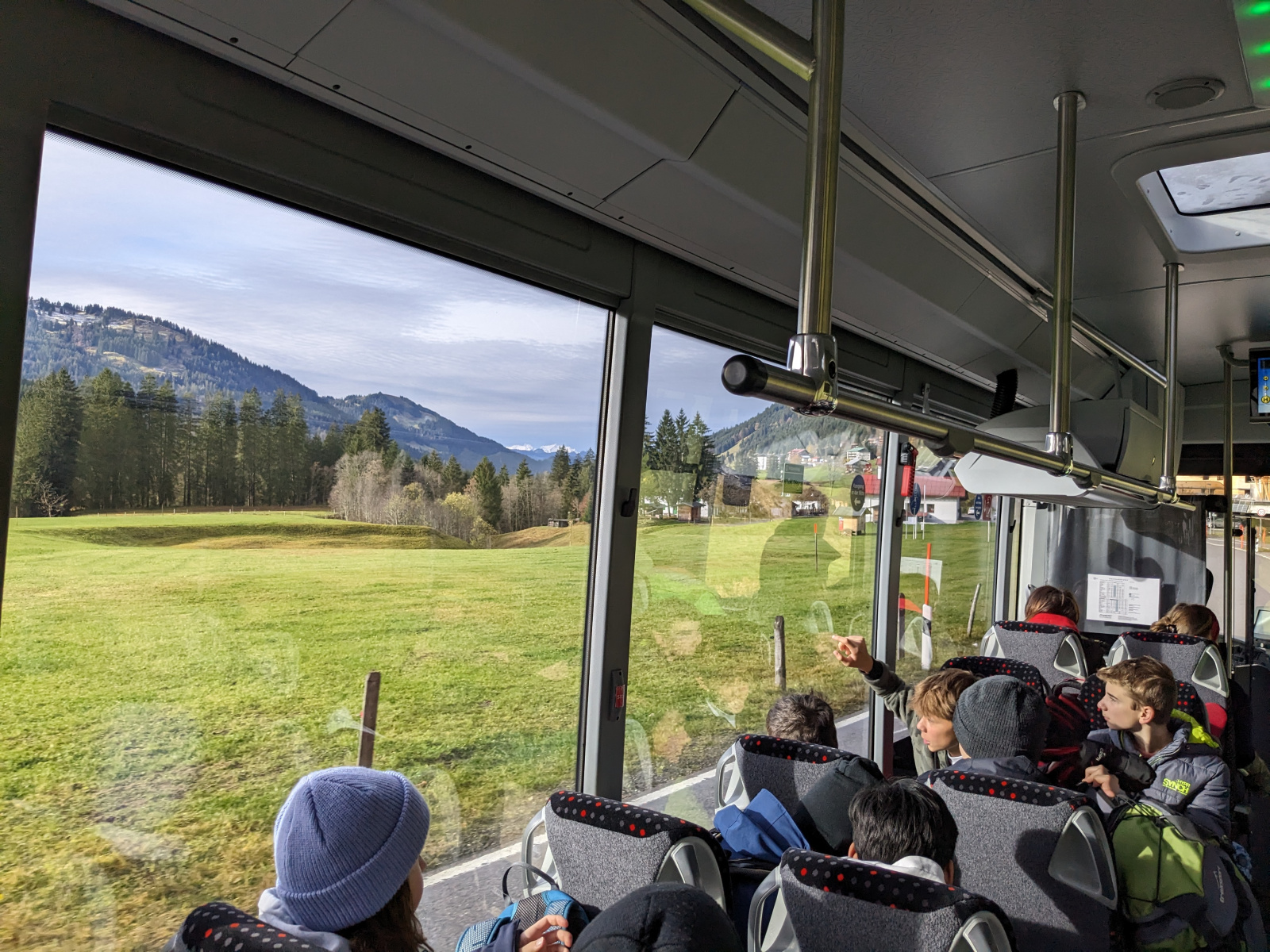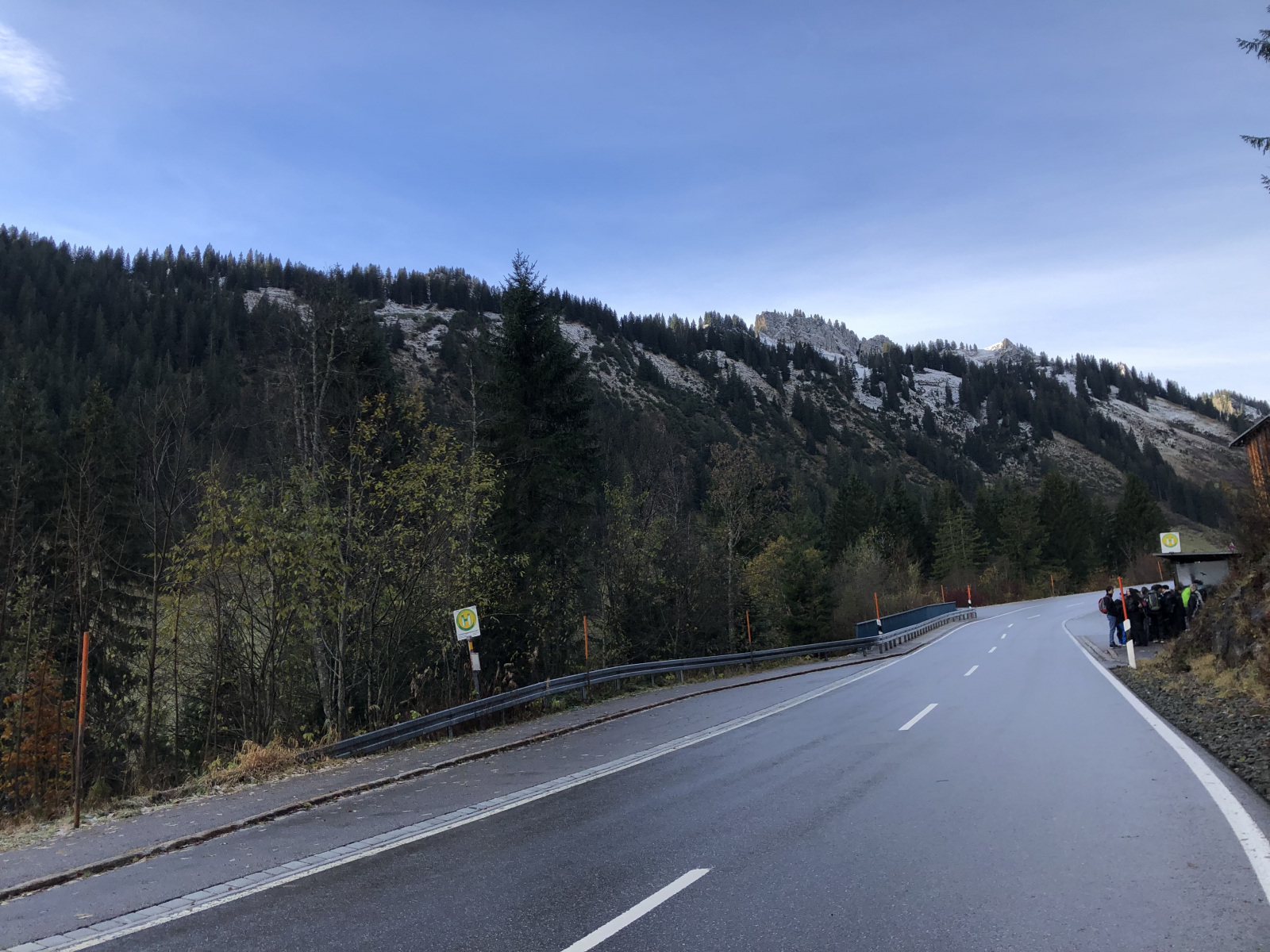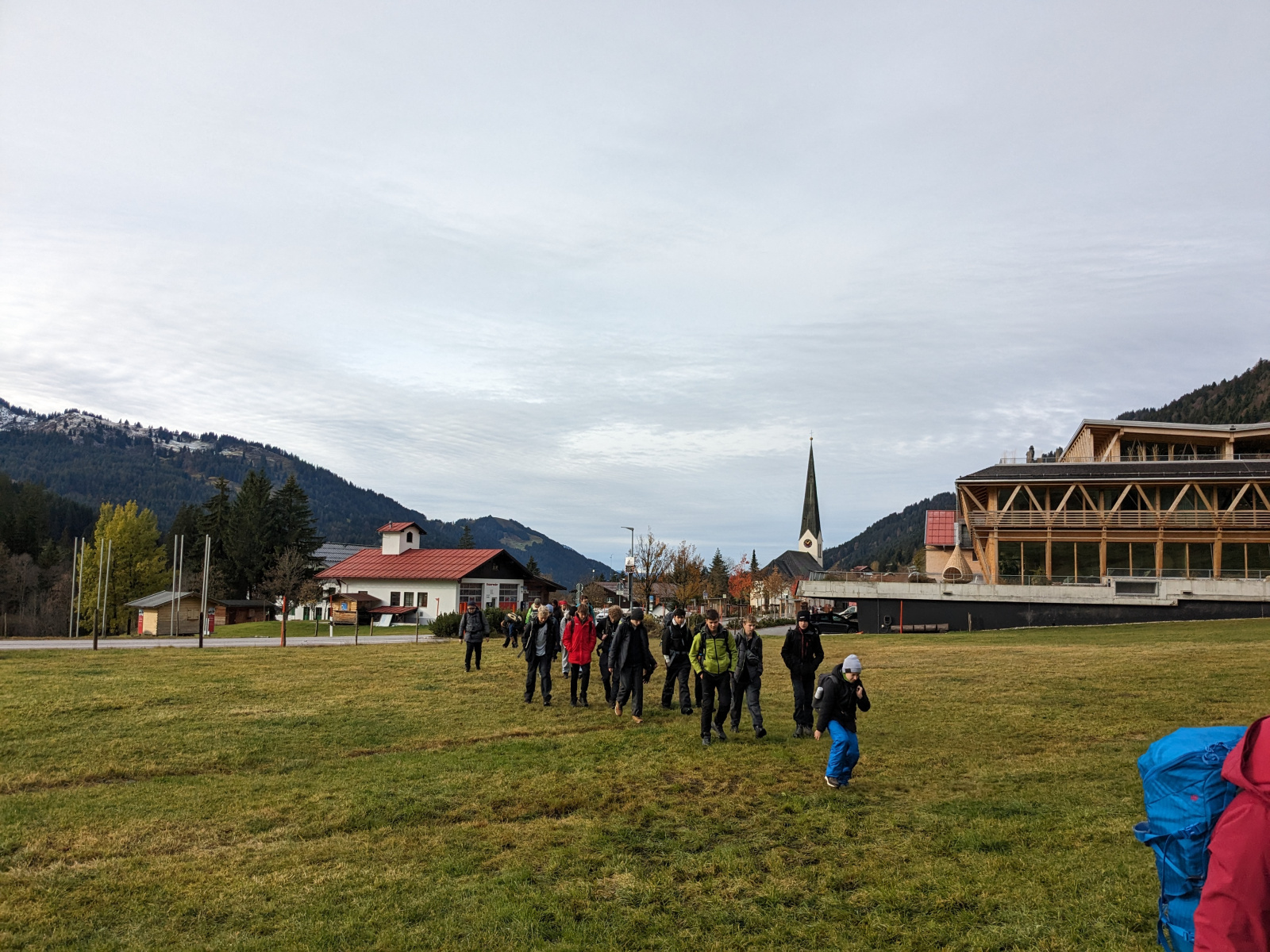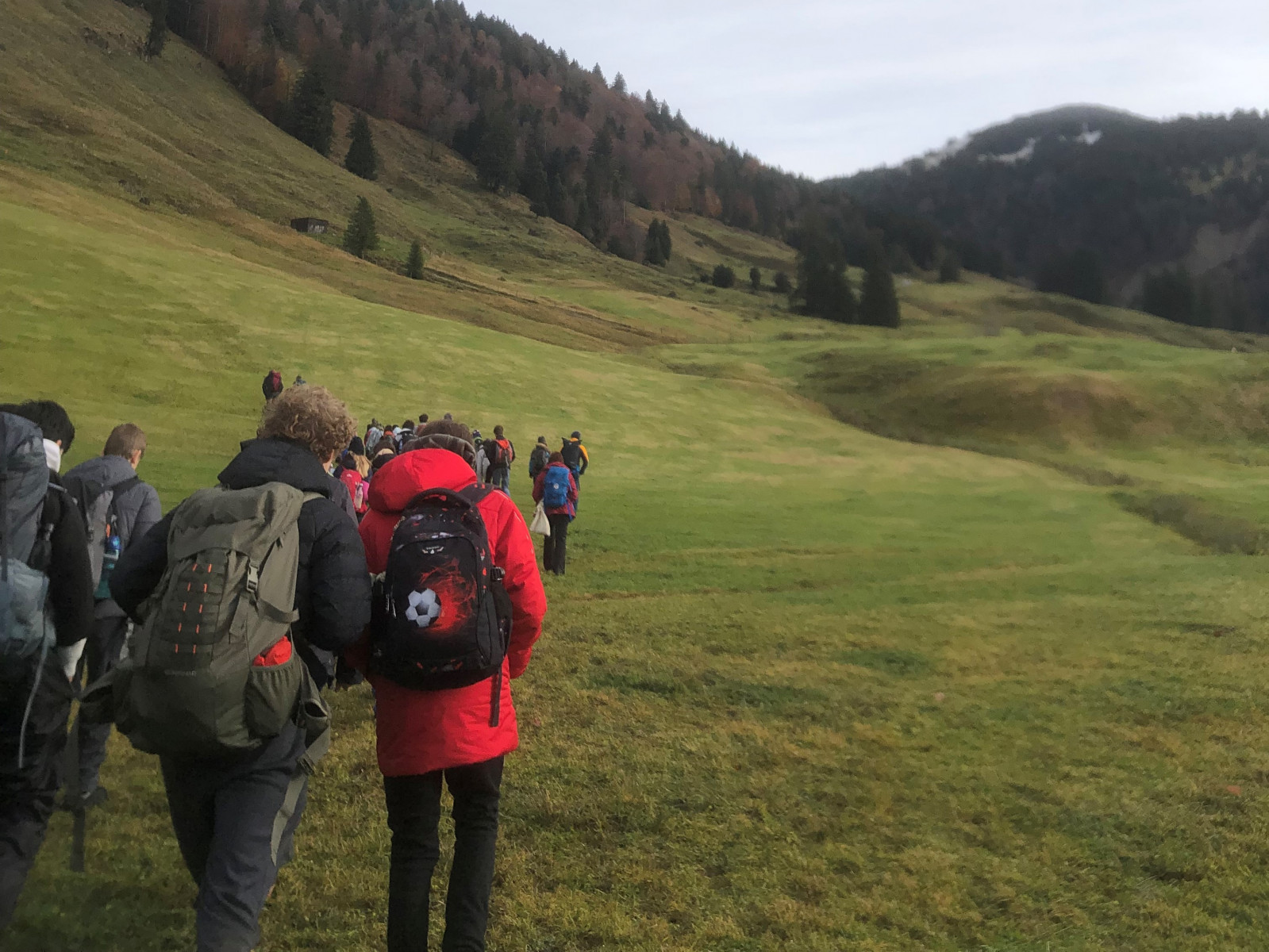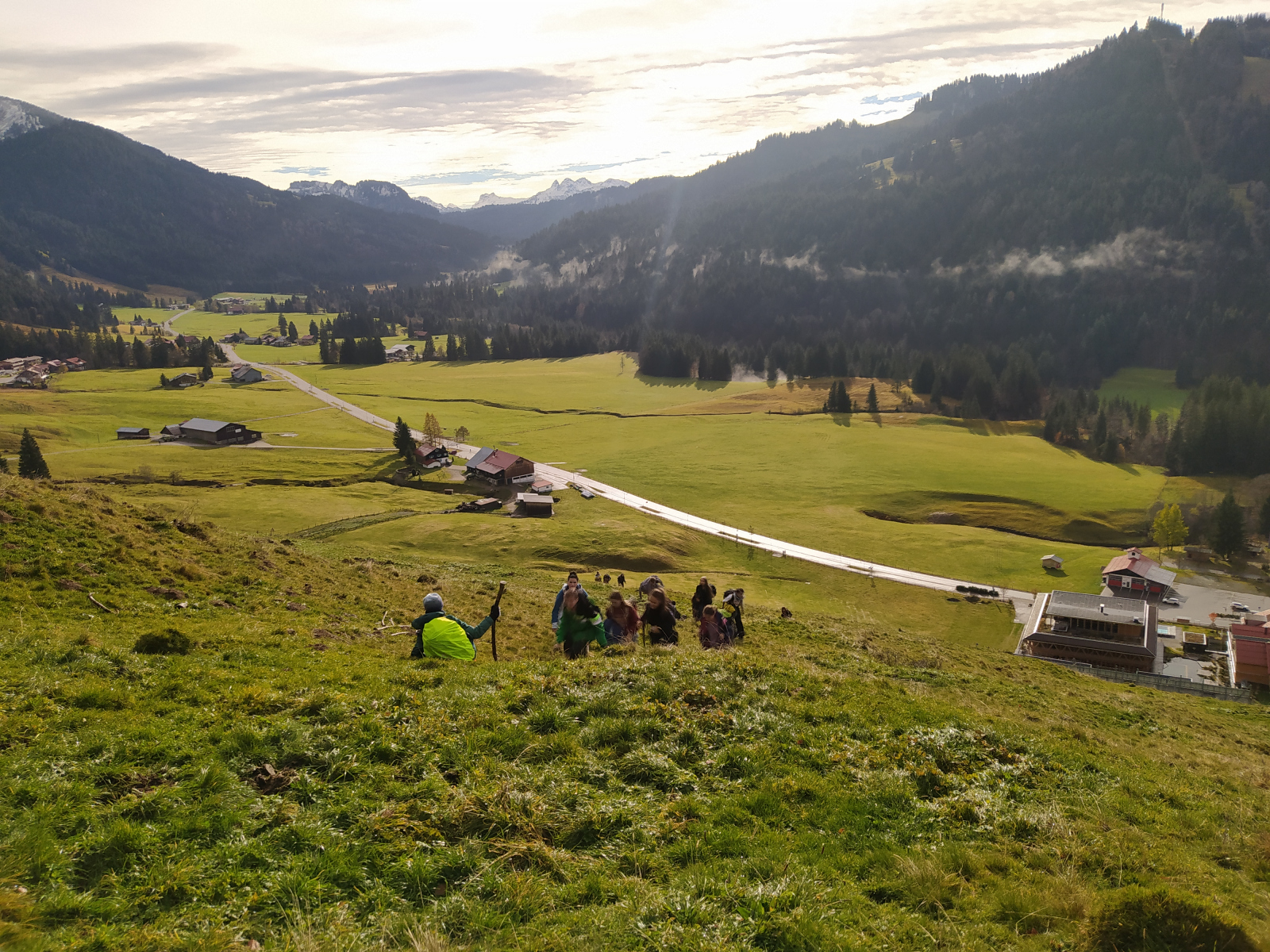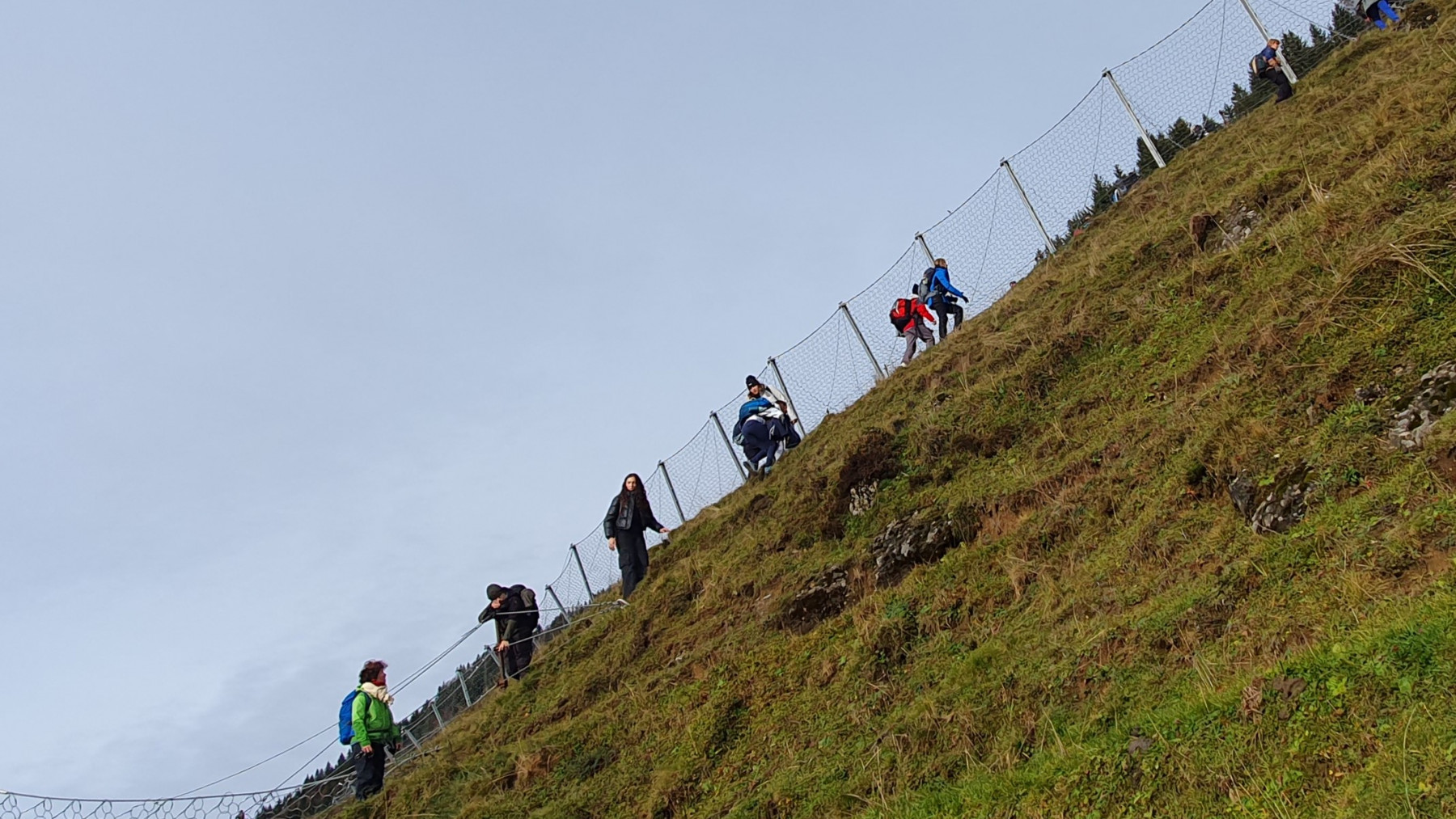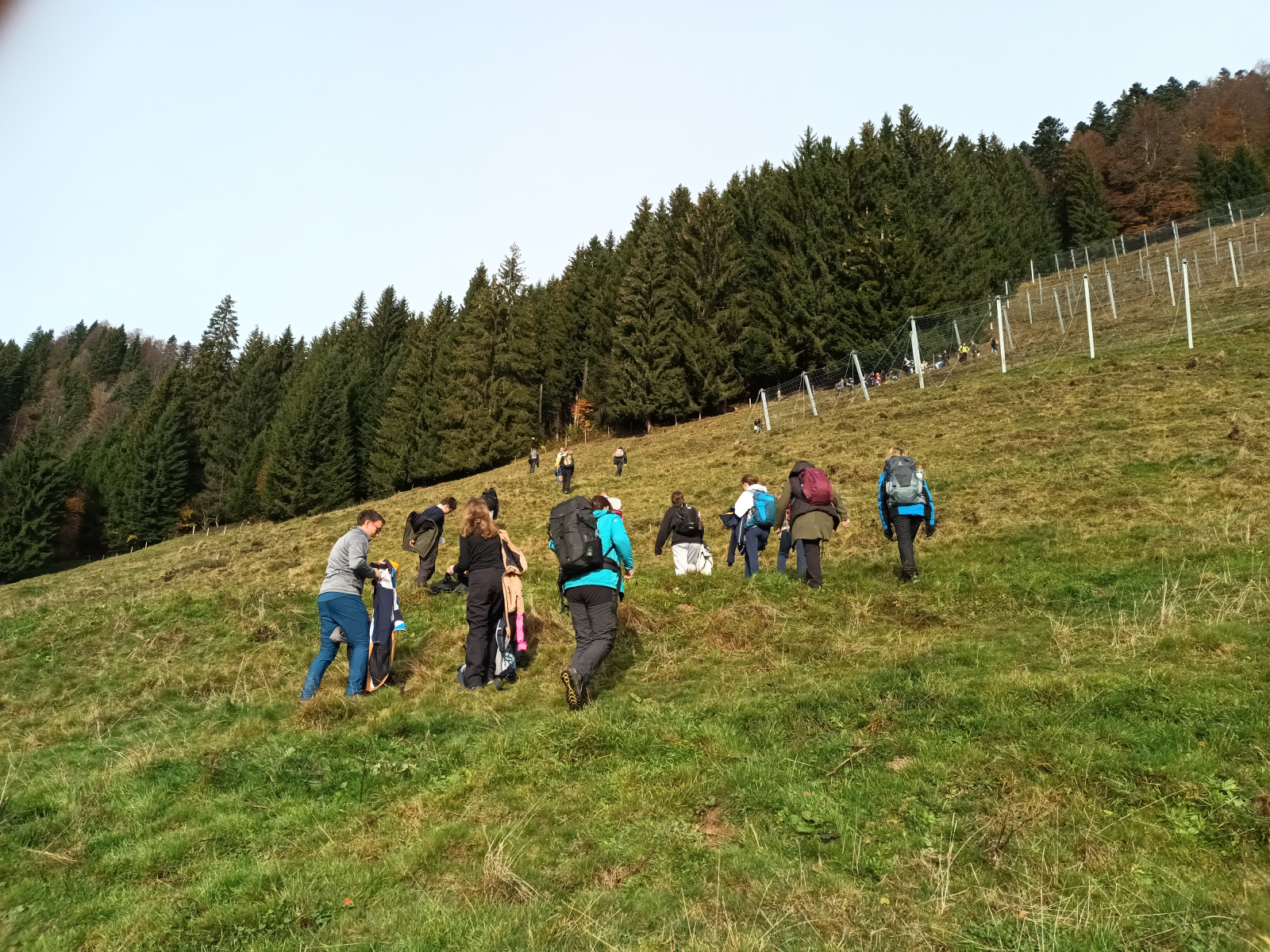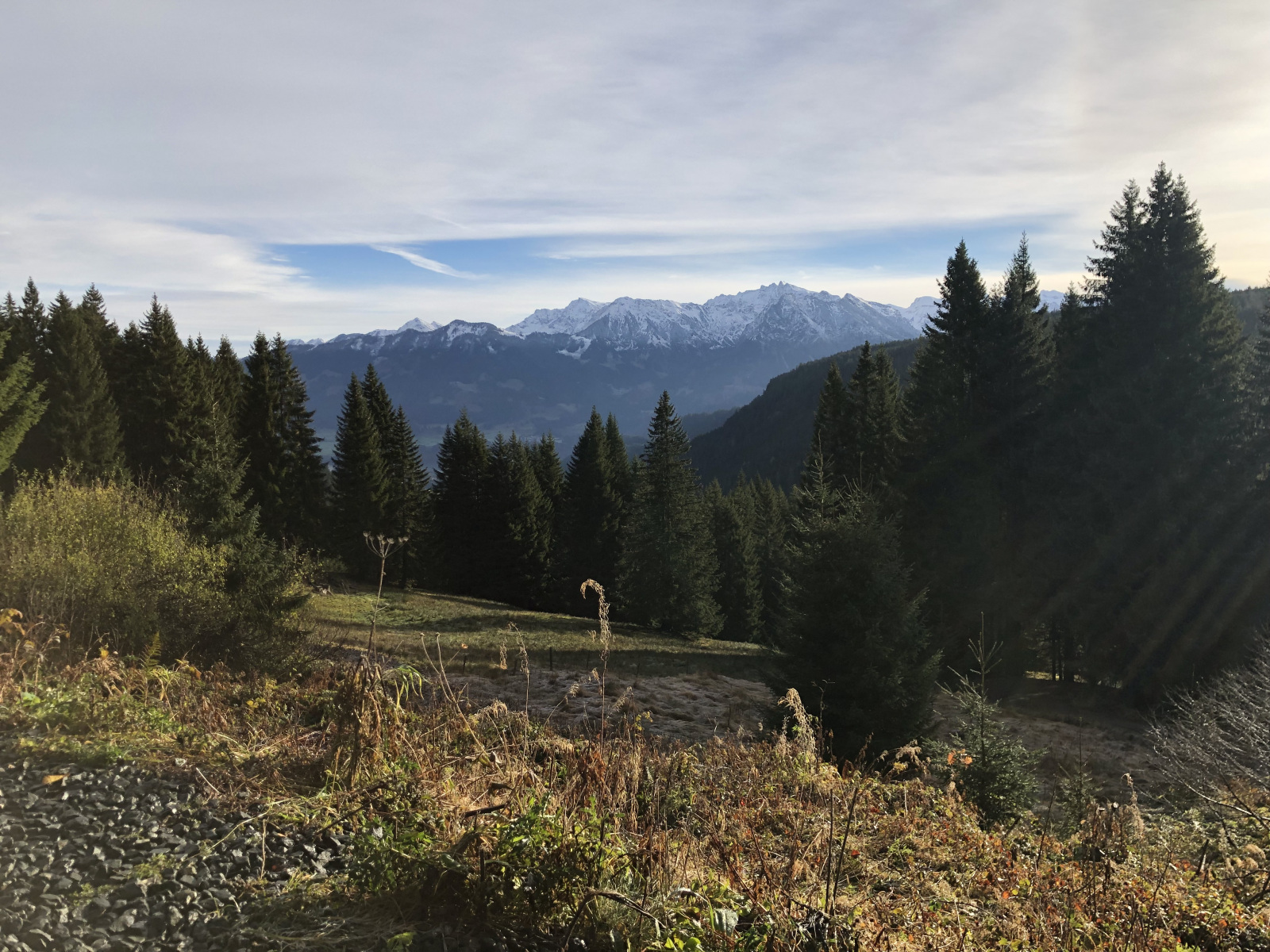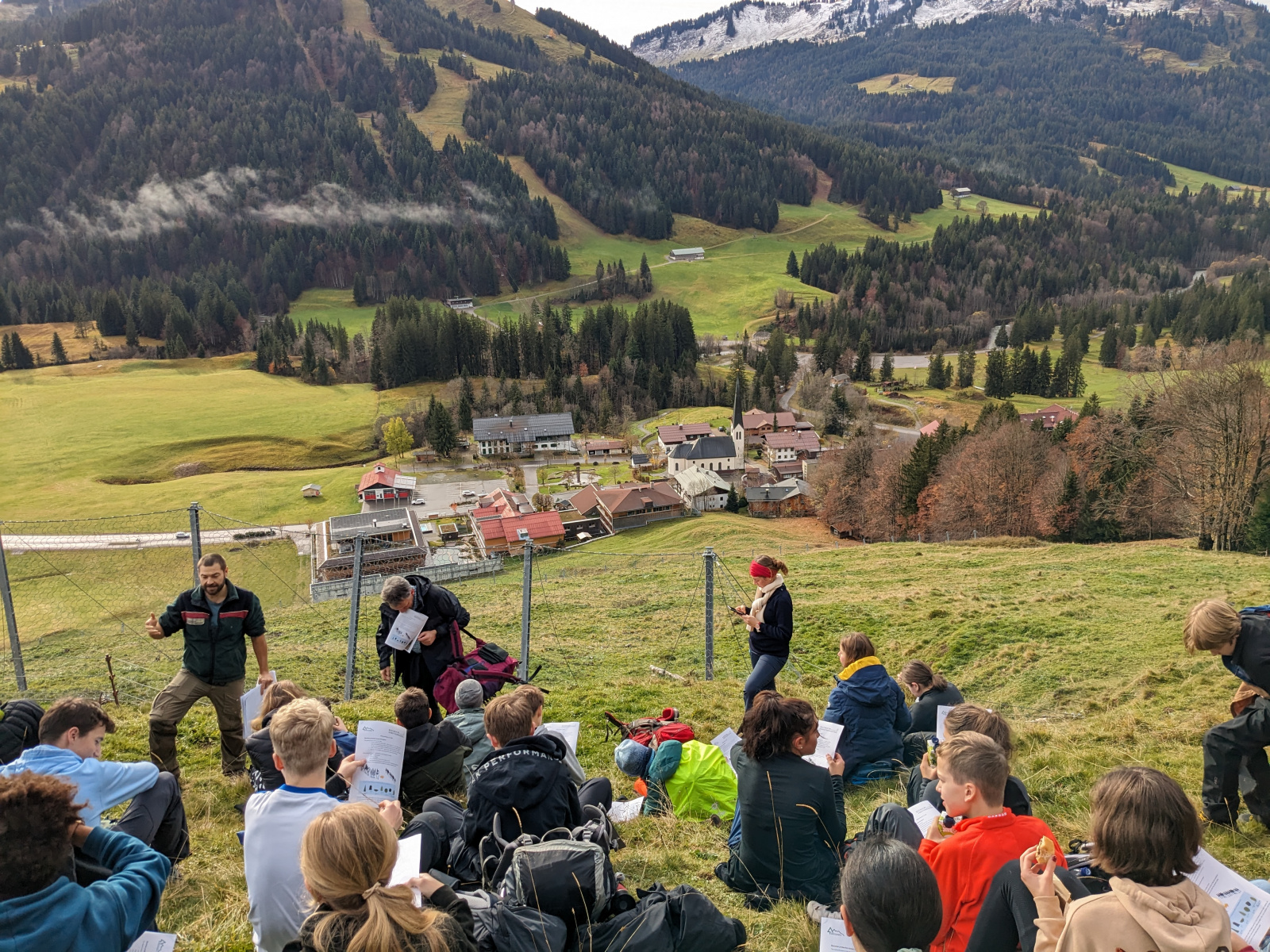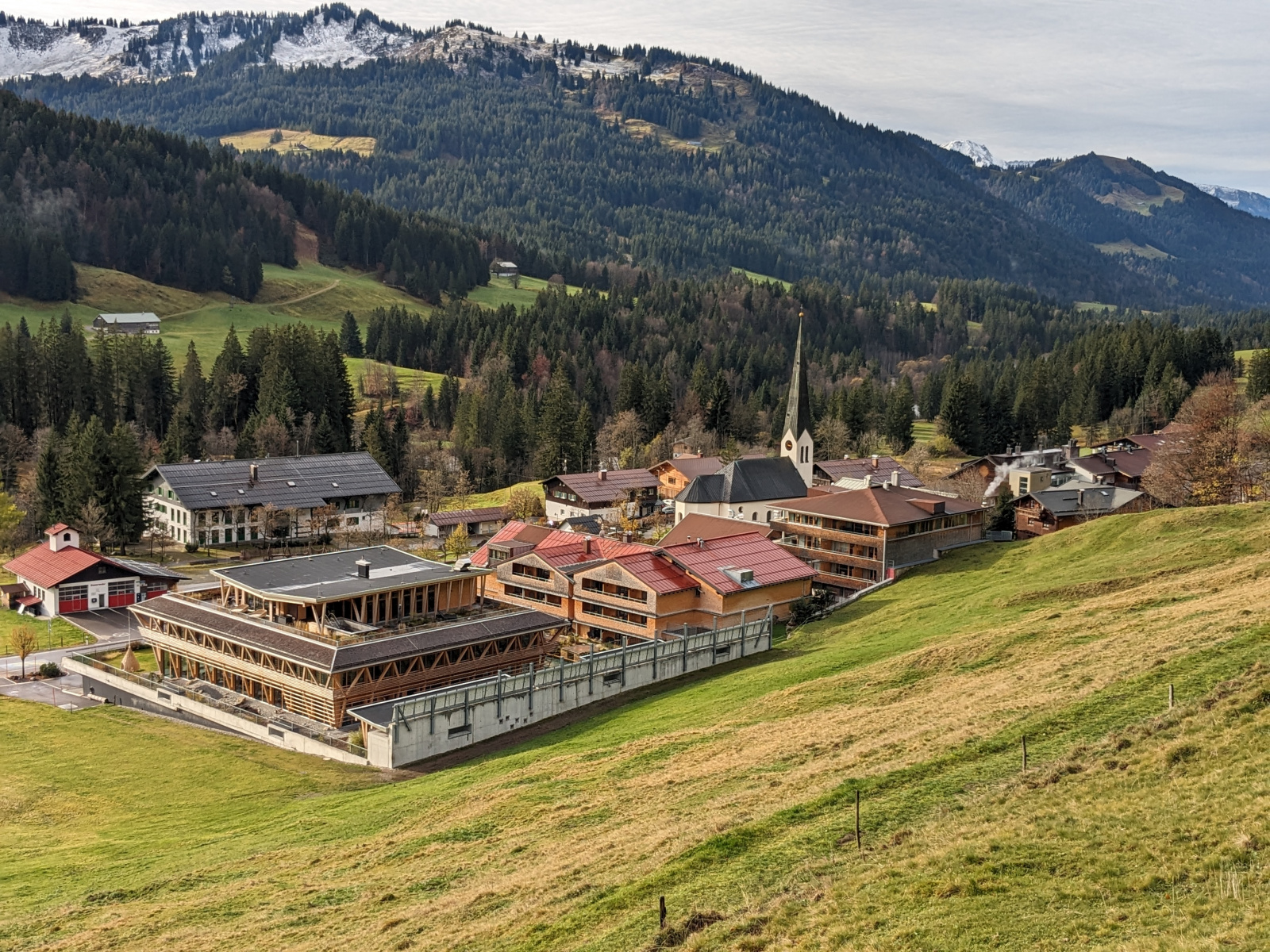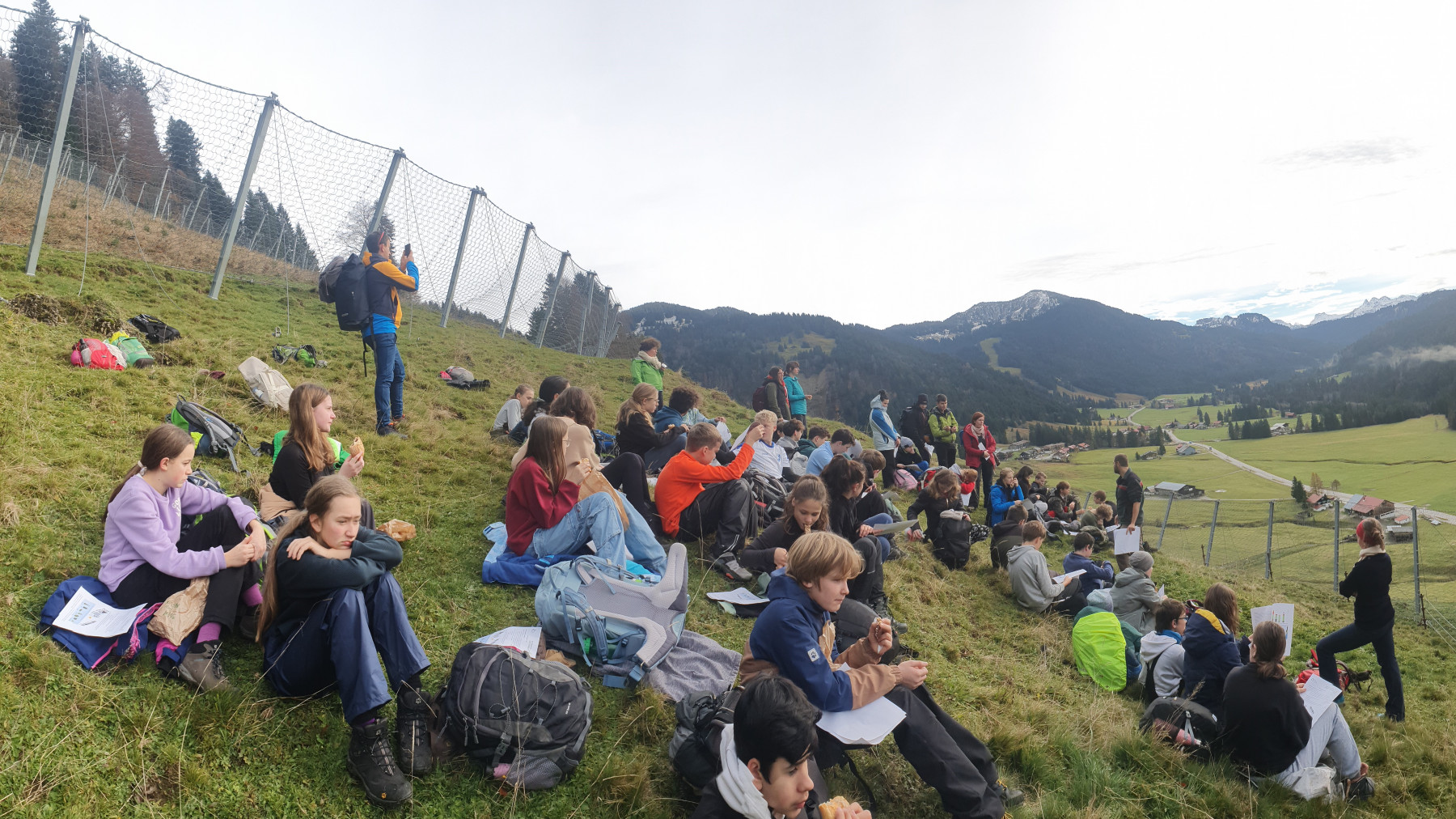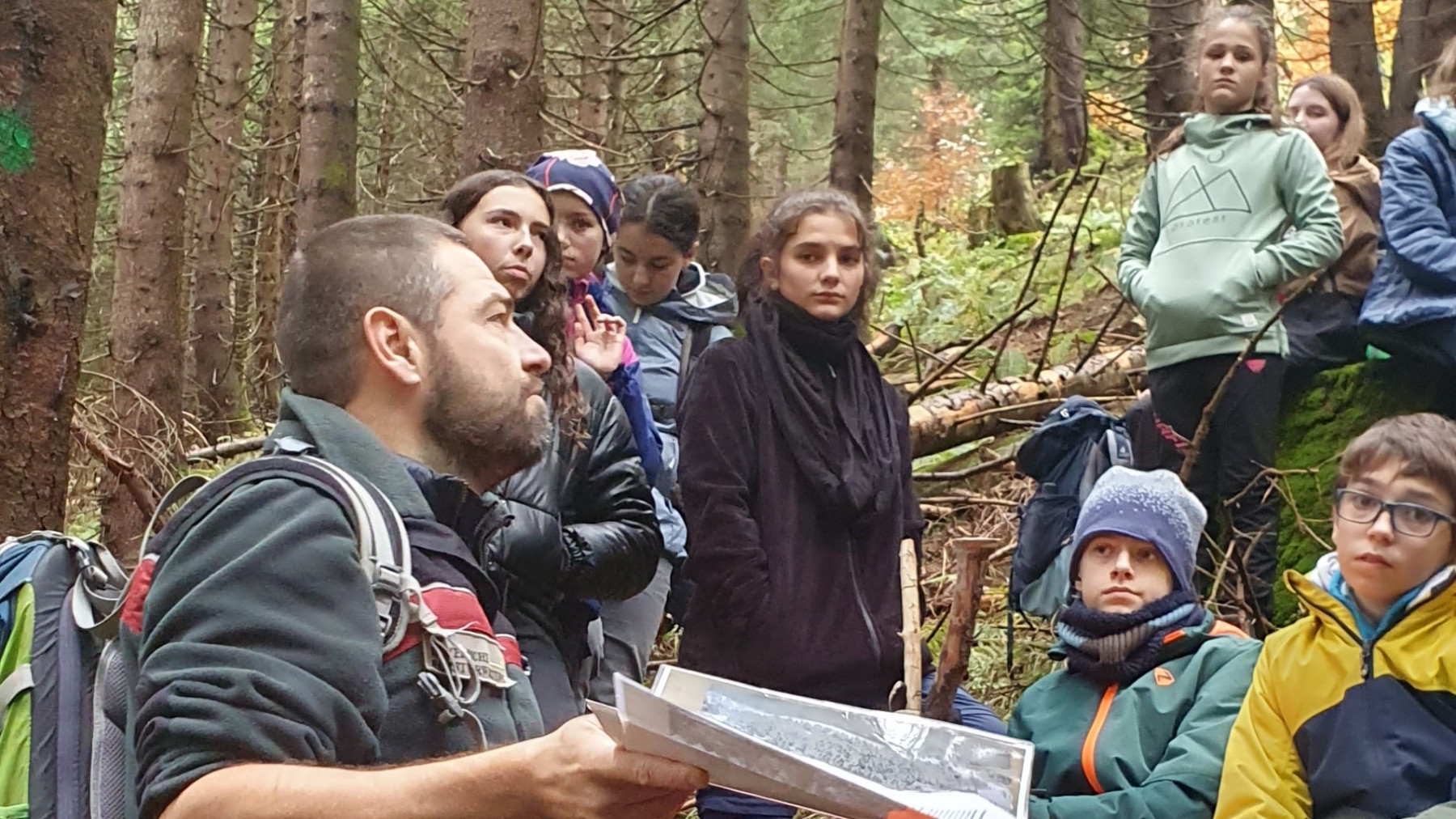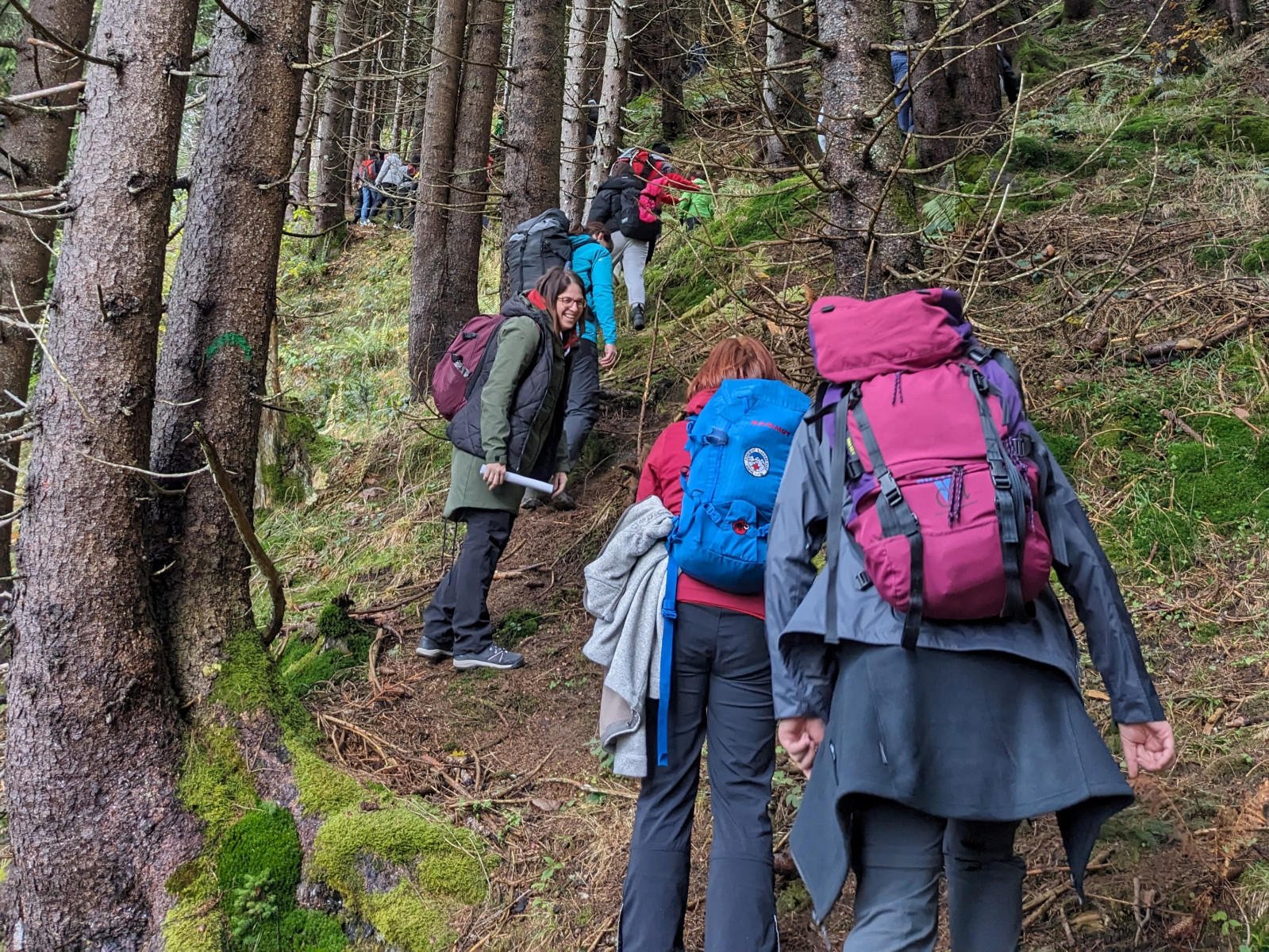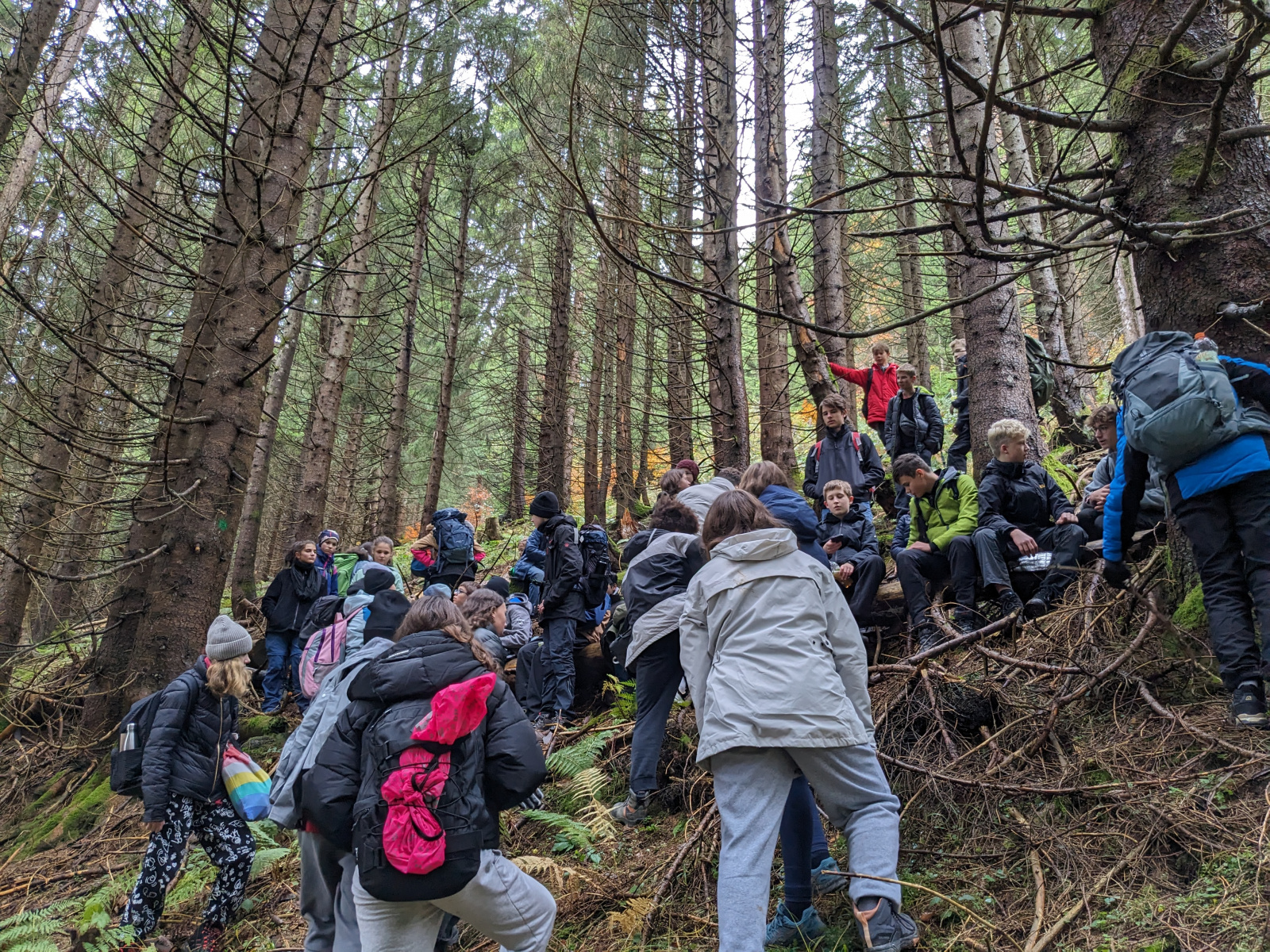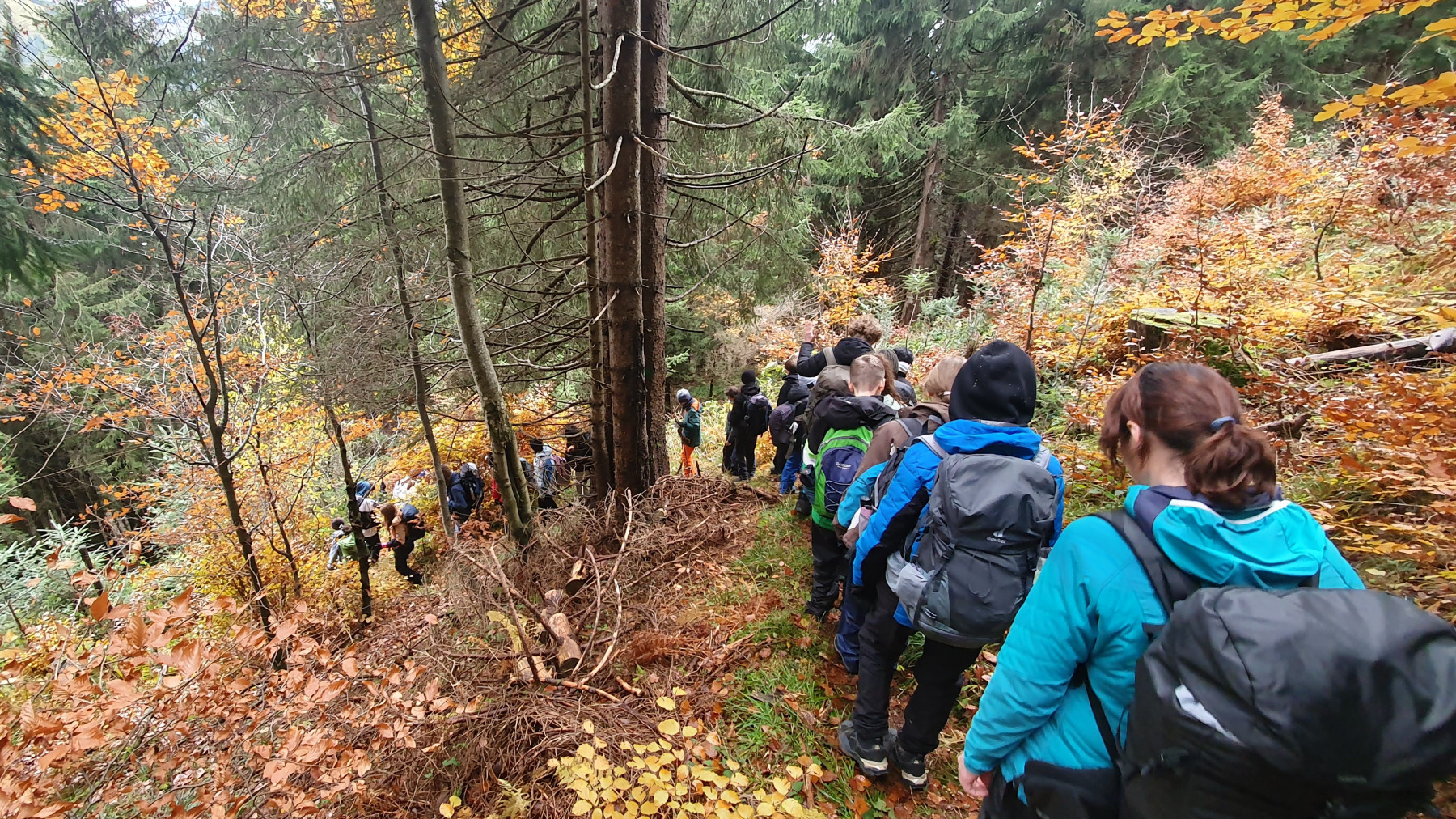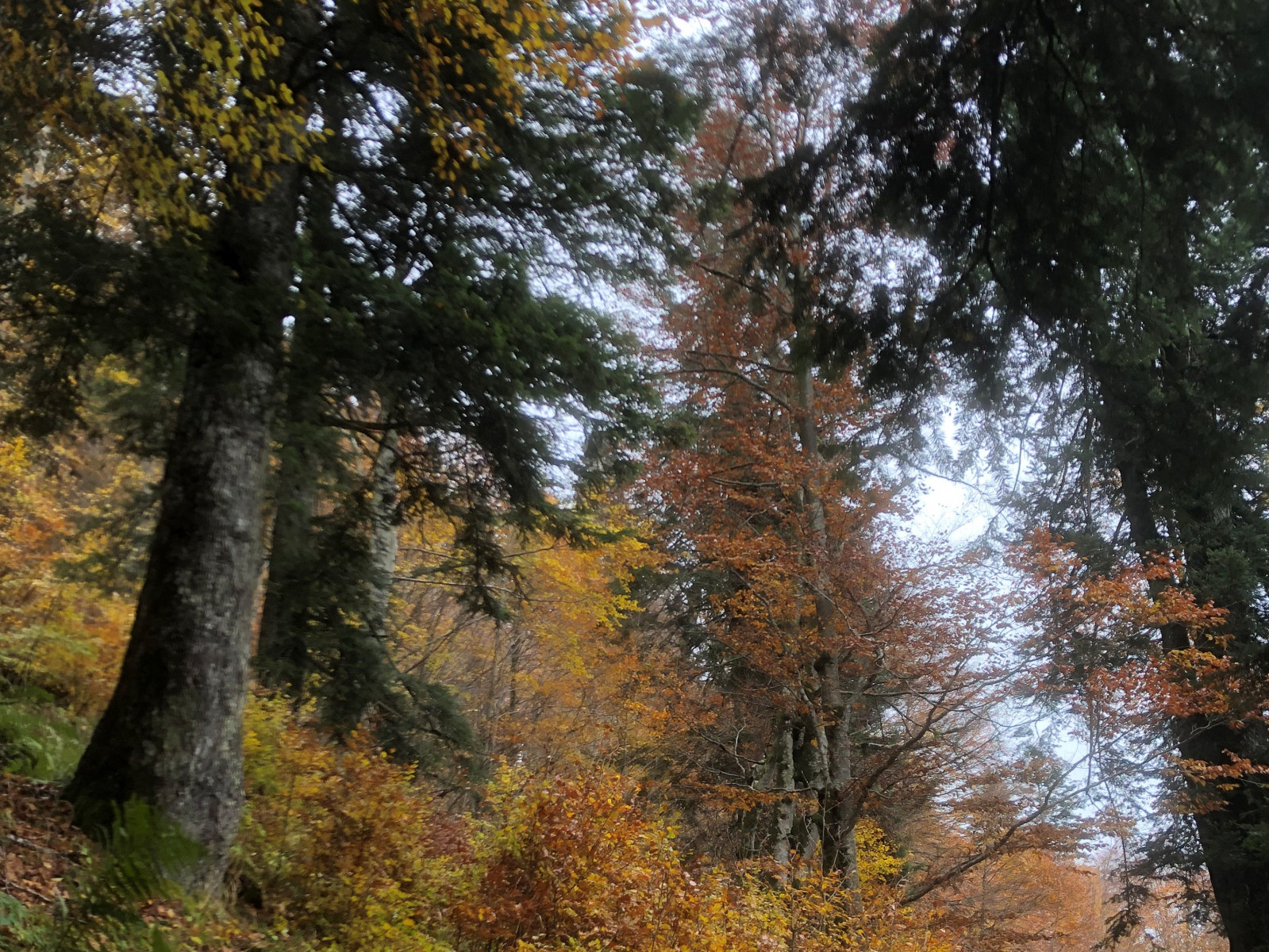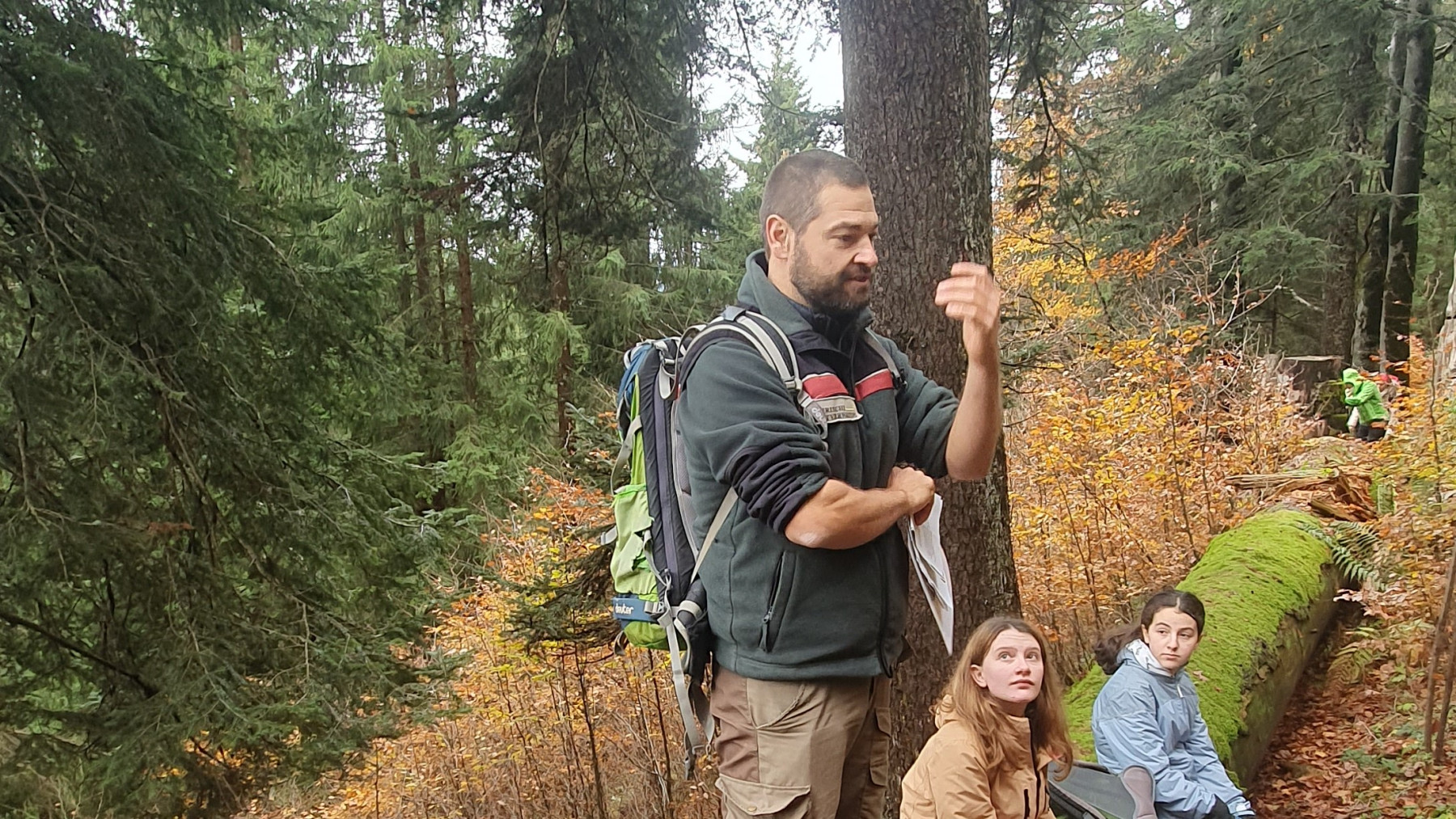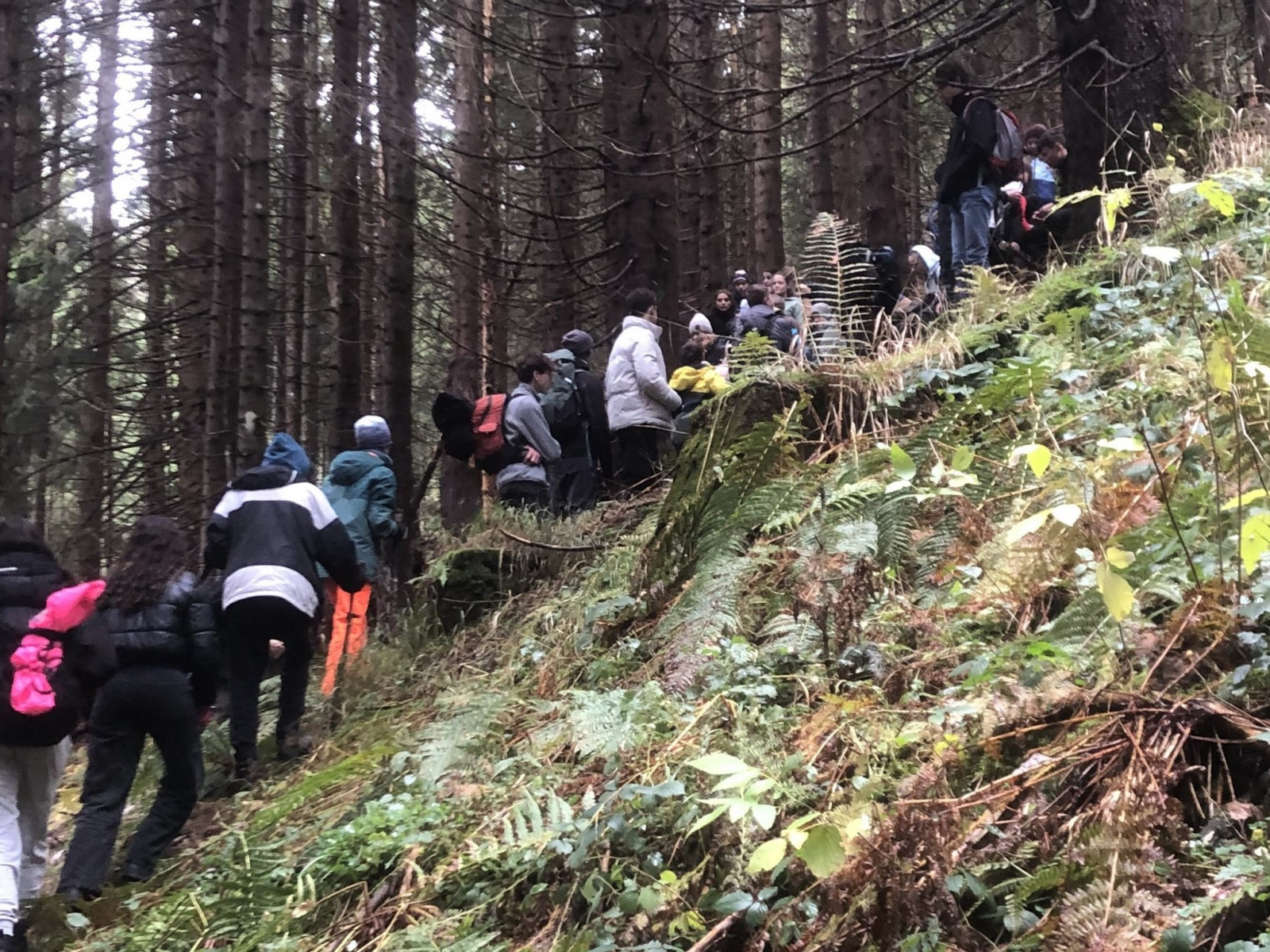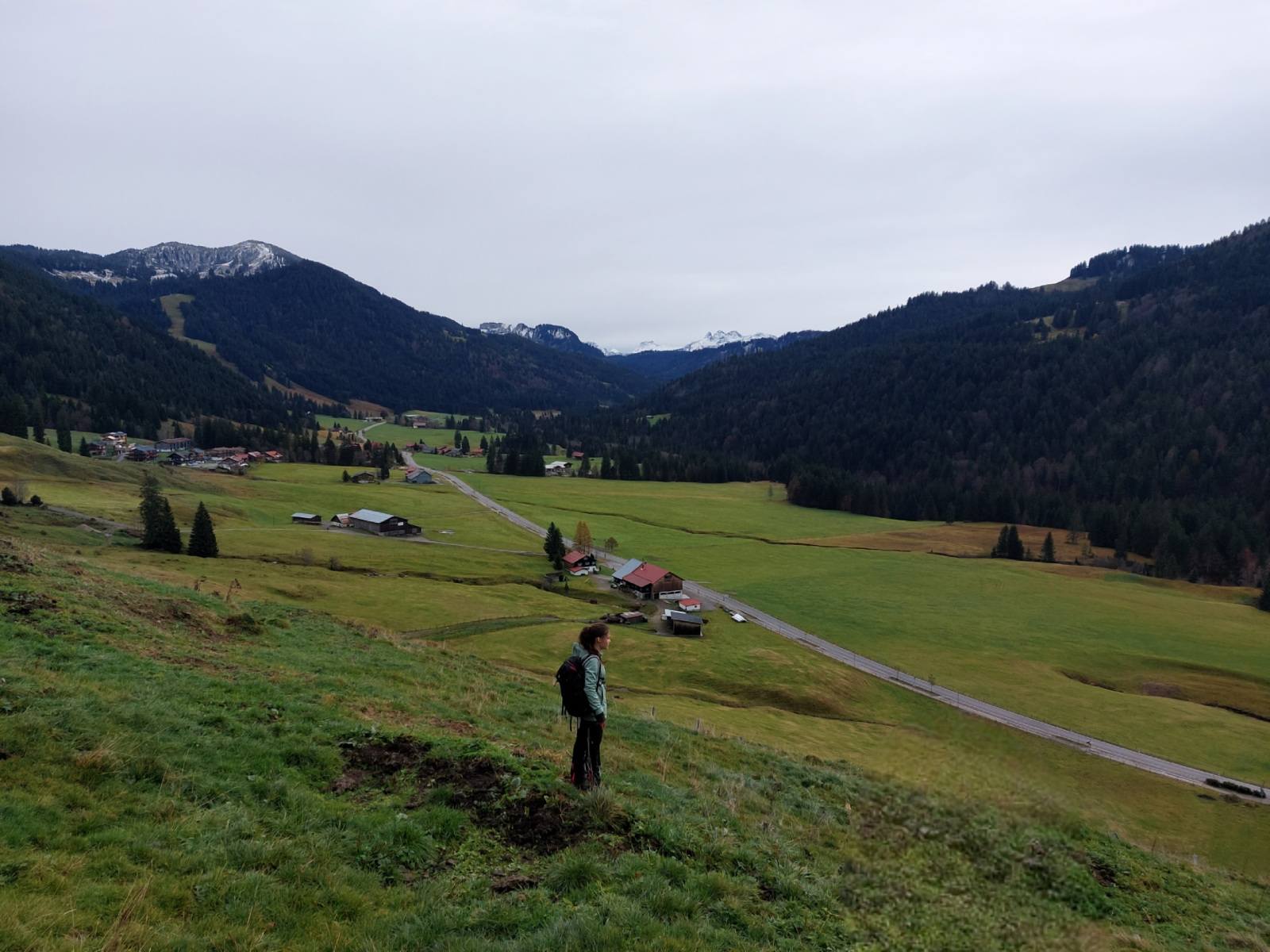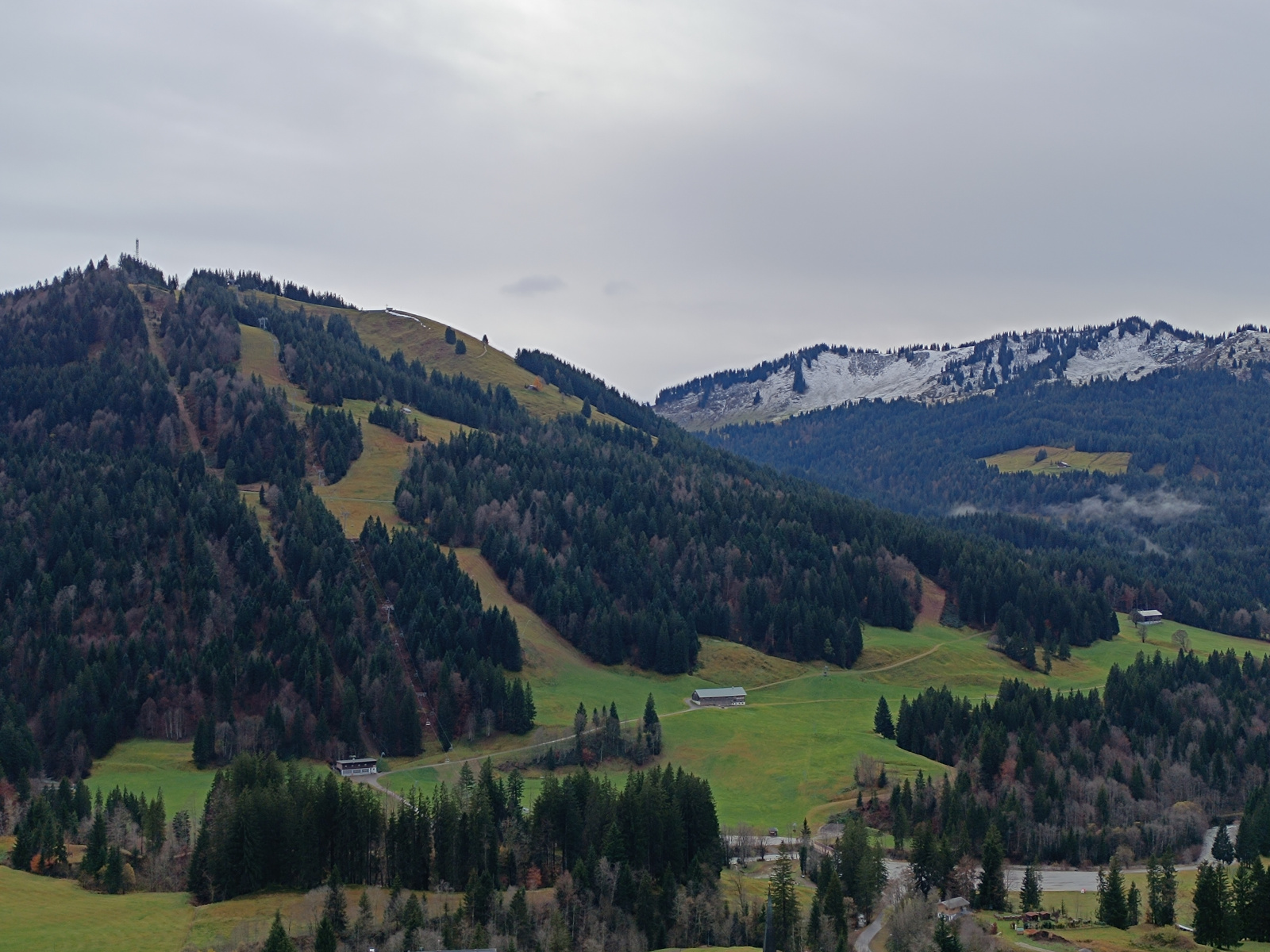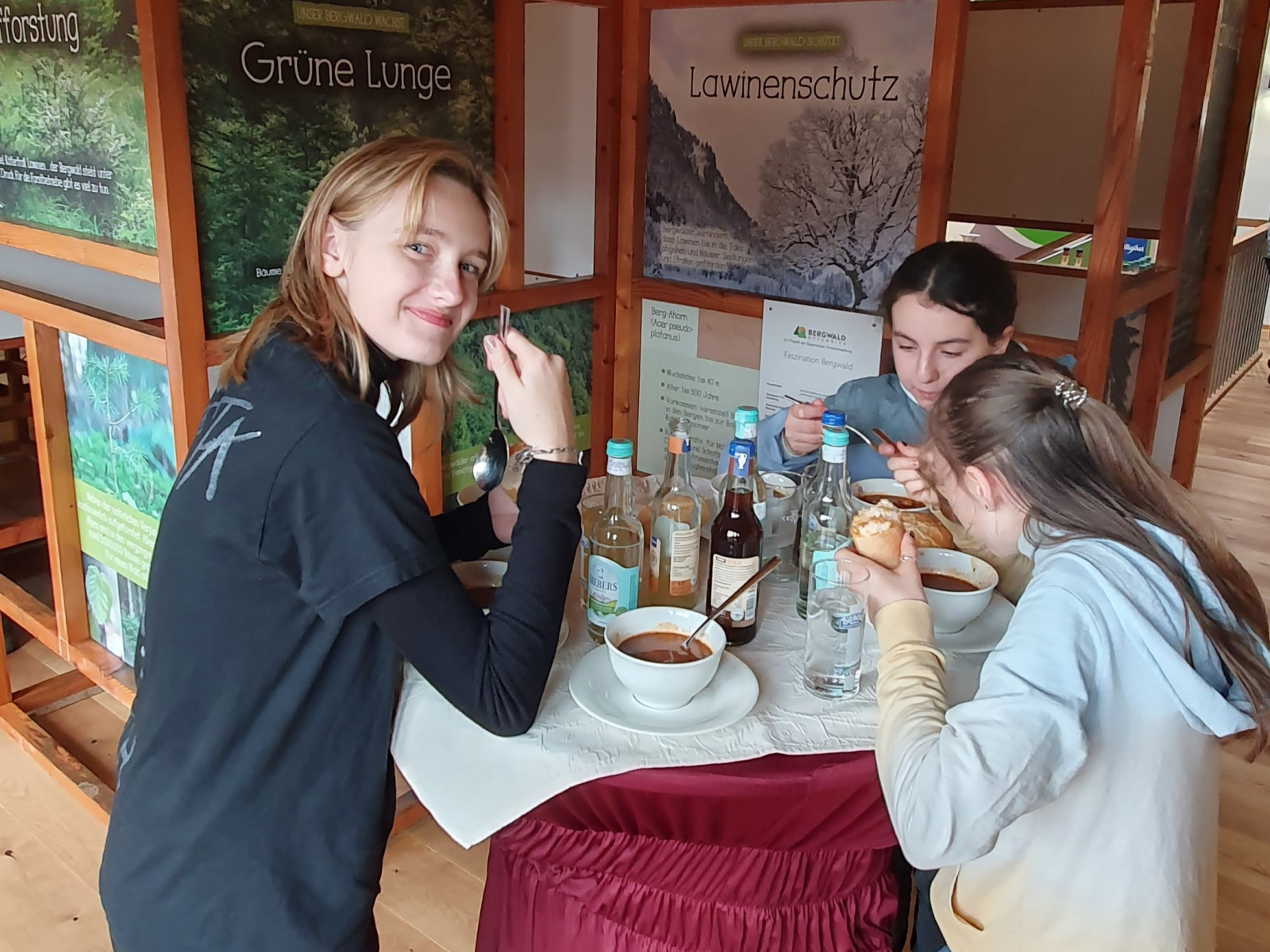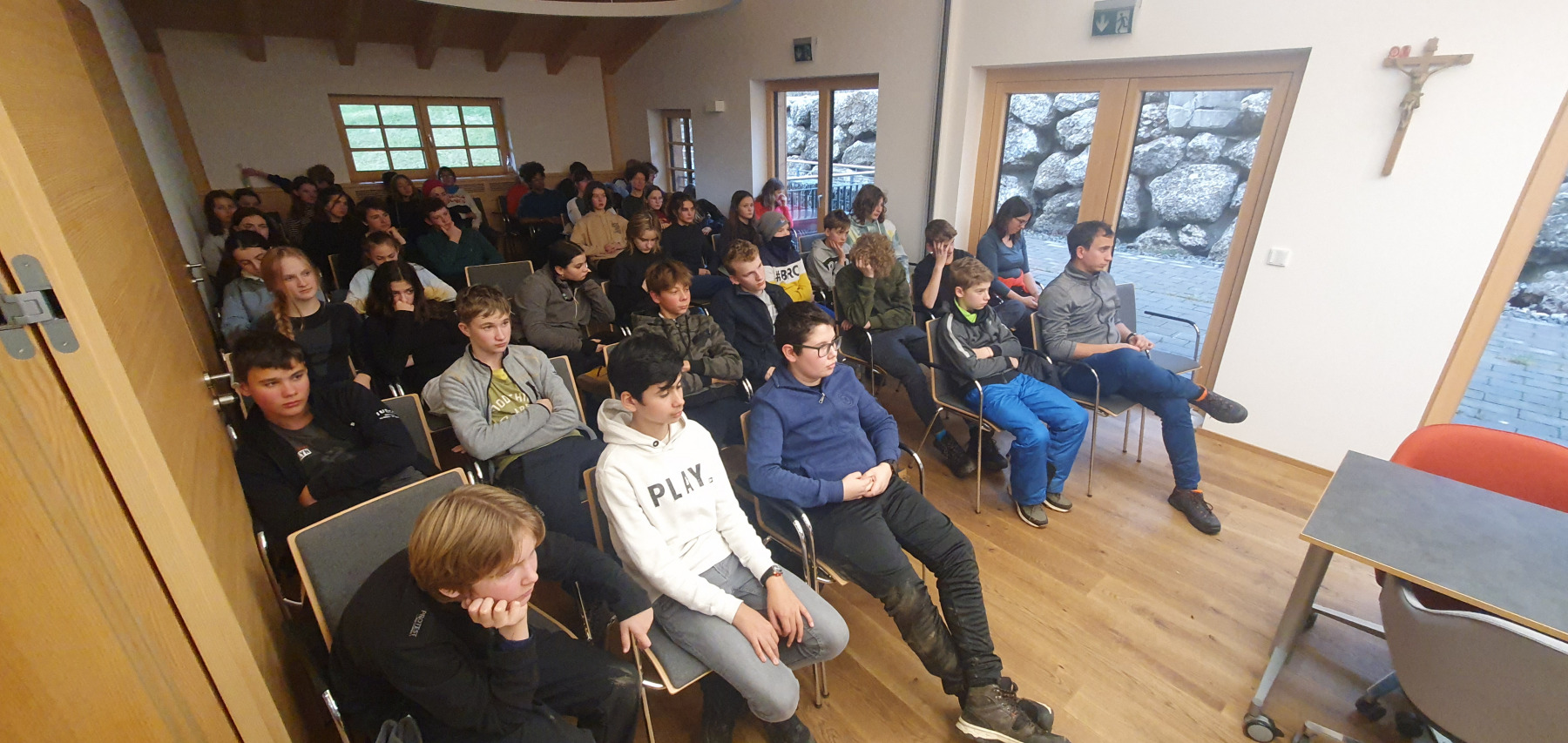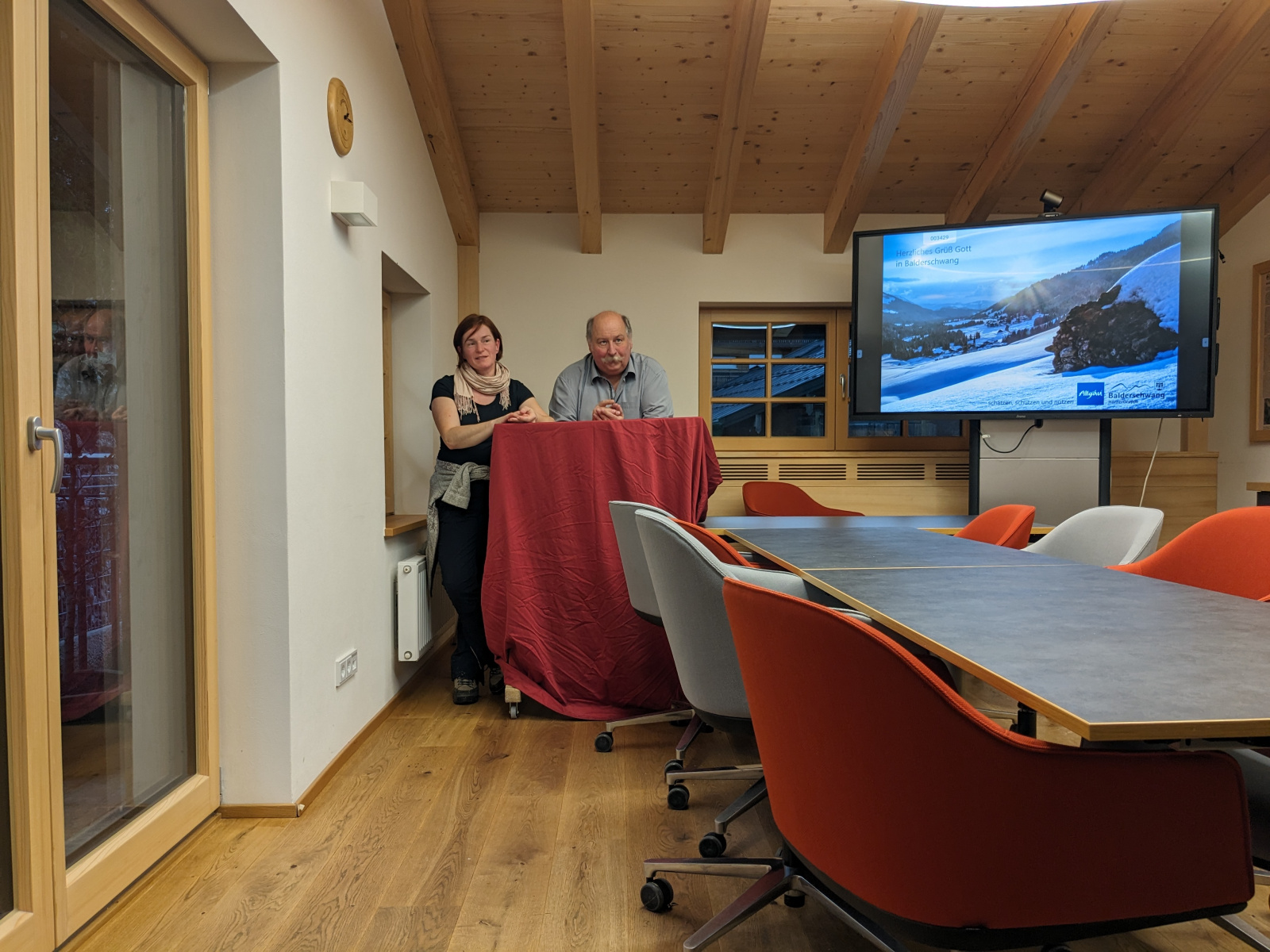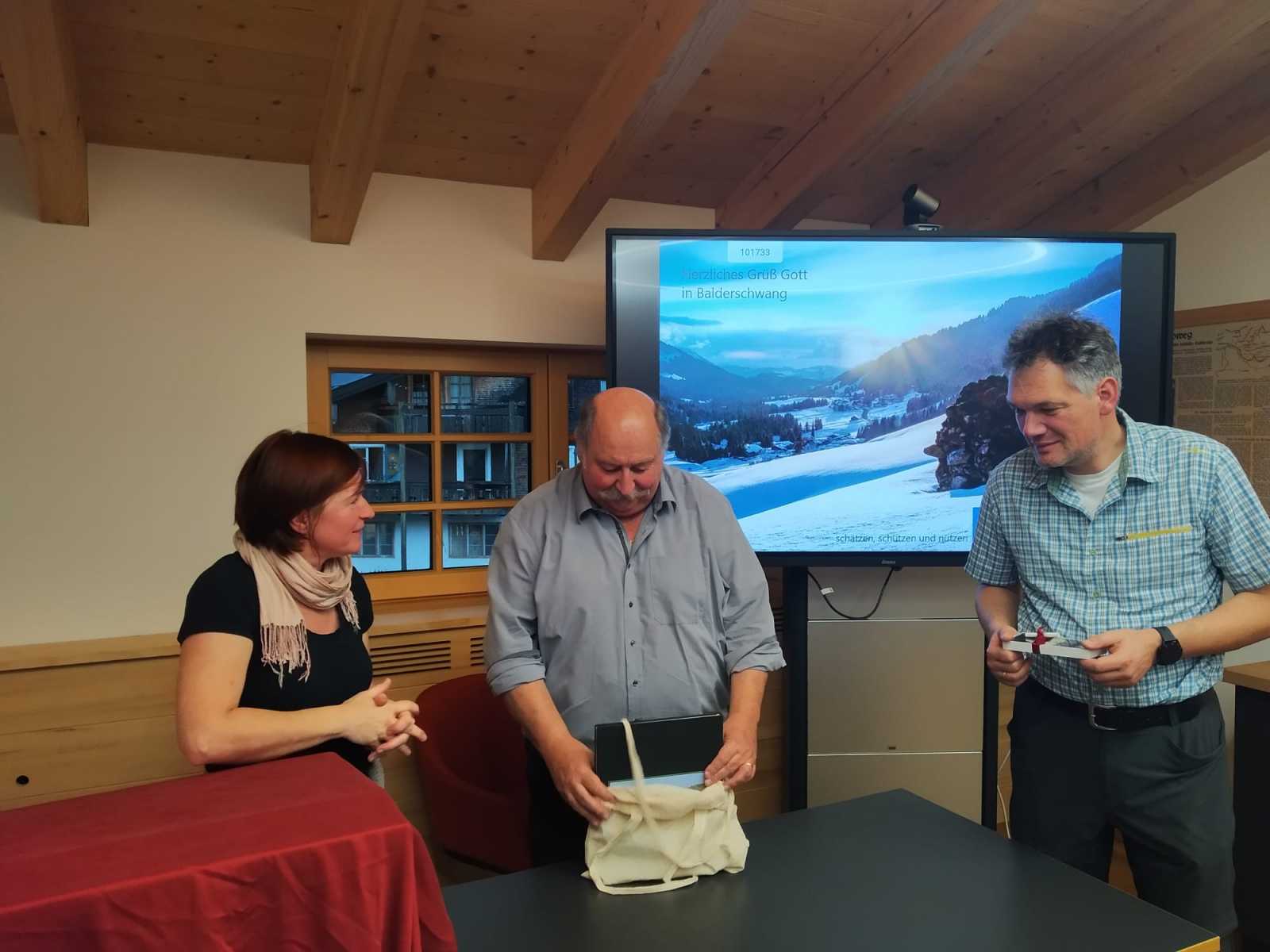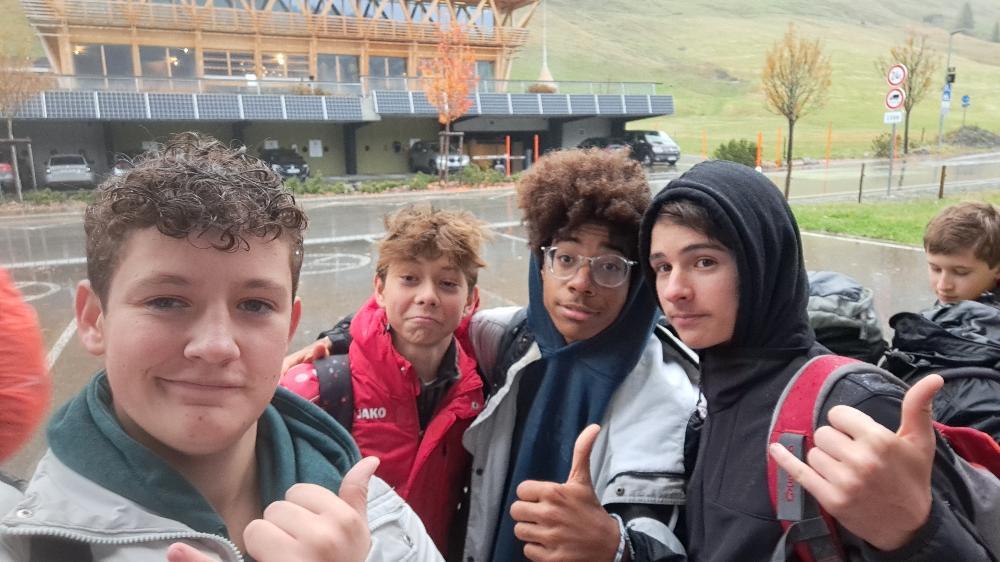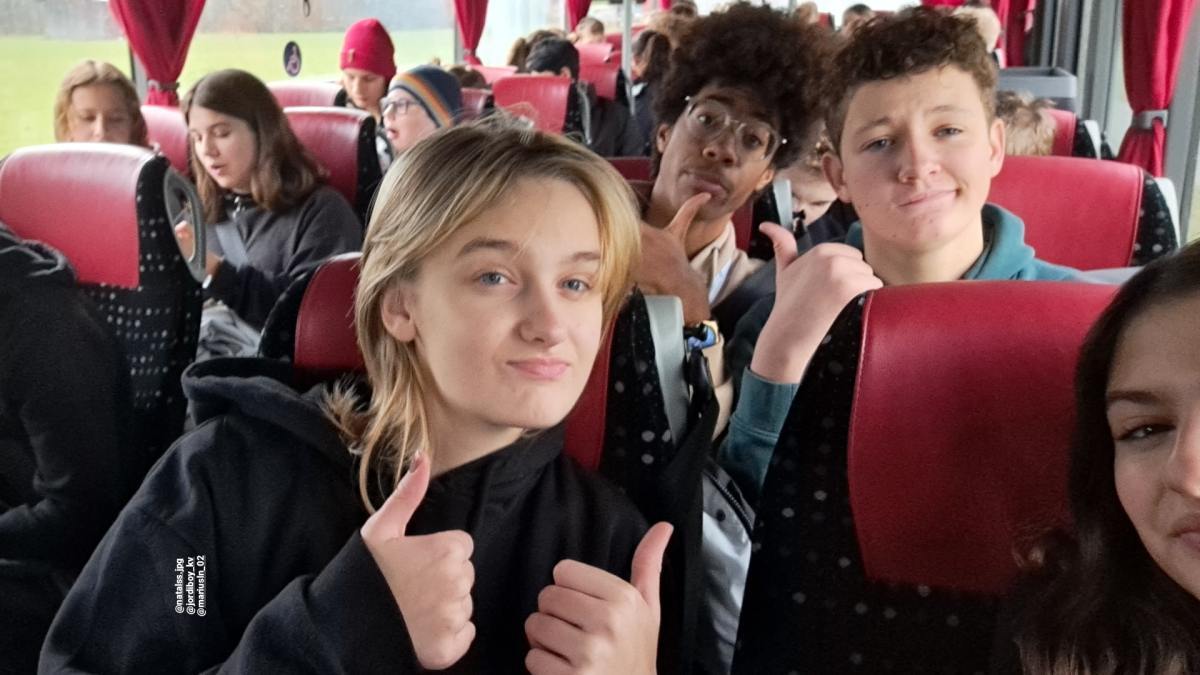We woke up at the ‘Wannenkopfhütte’ and had breakfast. The owner prepared our lunchboxes for our hiking tour. After that, we walked through the forest to the bus, which took us to Balderschwang. There we met Mr. Specht, a forest engineer, who took us on a three-hour hiking tour called ‘From Primeval Forest, via Protection Forest to Avalanche Protectors’. We took breaks during our hike to learn about the forest and the village.
The protection forest was created after an avalanche destroyed many parts of the village. To prevent future avalanches and ensure the safety of the village, large fences were installed. The speeches focused on the natural forests in the Bavarian Alps, the impact of human activity on the composition of tree species, and the effects of storms and bark beetles on the protection forest. There are seven types of trees in the Bavarian forests, including Spruce, Fir, Pine, Larch, Beech, Hardwood, and other deciduous trees. In the past, 90% of the valley was covered by trees, but due to intensive clearing for alpine meadows, the proportion of forests has decreased to 40%.
The location is approximately 1400 meters above sea level, with an average temperature of around five degrees and a snow depth of four meters (previously seven meters). The vegetation period lasts for 120 days. To create the best possible protection forest, the tree species should closely resemble the natural ecosystem. It is recommended to have trees of different ages, heights, and species to prevent large gaps in case of storms. Having many trunks is optimal, and the proportion of conifers should be between 30% and 70% as they have a positive effect on the snow cover.
We learned how to protect the forest from wild animals. They often try to eat smaller trees, so hunters need to shoot them. When a deer is shot, the others leave the forest, allowing the trees to grow. Mr. Specht provided us with two tables that showed the age of different trees. These tables indicate that beeches, deciduous trees, and spruces can live up to 120 years and grow to be the largest.
After our long hike, we walked to Balderschwang town hall and met the friendly first major. He invited us for lunch, serving soup before a short break. The major then told us about the history of the village, including the ski areas. In the past, the only entrance to the village was from Austria, despite being part of Germany, as it is today. He informed us that climate change has both positive and negative effects on his village. On the positive side, Balderschwang is not as warm in the summer as towns or cities. On the negative side, there is less snow during winter.
As a result of climate change, the village has shifted to summer tourism, with 60% of their profit now coming during the summer season. This is due to the fact that in the future, skiing will no longer be possible.
Following our visit to the mayor, we had to take the bus to Augsburg as there were no trains available that day. The bus arrived half an hour late, causing traffic jam.
